Infrastructure Adaptation for Emerging Economies
Scaling sustainable
solutions


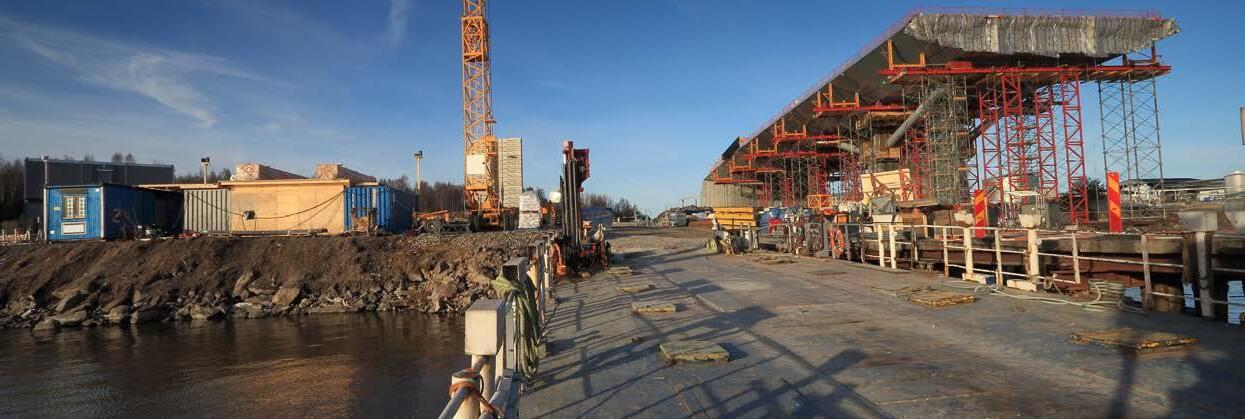


Foreword from the President


Catherine Karakatsanis M.E.Sc P.Eng ICD.D FEC FCAE. LL.D President, FIDIC
As FIDIC launches its first State of the World report for 2025, we do so at a time of profound challenge and unprecedented opportunity for the infrastructure sector. This report, Infrastructure Adaptation for Emerging Economies –Scaling Sustainable Solutions, speaks to the urgency of our moment and the collective responsibility we share to forge pathways of equity, resilience and climate justice.
Infrastructure has always been the backbone of societies the bridges that connect communities, the water systems that sustain life and the energy networks that power progress. Yet, in too many parts of the world, these lifelines remain out of reach for millions. The global infrastructure gap is not merely a statistic; it is a daily reality that defines lives, constrains opportunity and deepens inequality.
Emerging economies stand at the forefront of this challenge and of the solutions. With rapid urbanisation, dynamic populations and unique environmental contexts, these regions are poised to lead a new era of infrastructure development, one that is inclusive, adaptive and locally grounded. From Sub-Saharan Africa to Southeast Asia, from Latin America to the Middle East, the ingenuity and determination of these communities offer hope and a clear direction forward.
This report reflects FIDIC’s enduring commitment to advancing engineering excellence and to championing the transformative potential of infrastructure. It draws upon the collective insights of our global community including engineers, policymakers, financiers and community leaders – who are working every day to deliver systems that are not only technically robust, but also socially just and environmentally sustainable.
As we navigate this pivotal decade, we are called to rethink the very principles that underpin infrastructure development. The SDGs, the Paris Agreement and the rapidly evolving climate finance landscape provide a roadmap, but it is up to us to translate these global frameworks into practical, scalable action on the ground. The pages that follow explore how that action can be realised, through inclusive partnerships, innovative technologies and capacity building that empowers local voices and expertise.
The 2025 FIDIC Global Infrastructure Conference in Cape Town and COP30 in Brazil later this year will underscore the critical role of infrastructure in addressing climate adaptation, driving economic inclusion and fostering social equity. These gatherings, along with the work of FIDIC’s global member associations and partners worldwide, remind us that solutions are already taking shape and that scaling them is both our challenge and our opportunity.
In this spirit, I invite you to explore the findings and insights of this report. Let it serve not only as a reflection of our shared progress and the road still ahead, but also as a call to action to reimagine infrastructure as a force for dignity, justice and long-term resilience in every community it touches.
Together, we can build a future where no one is left behind and where infrastructure is a catalyst for equitable and sustainable development.



This FIDIC State of the World report, Infrastructure Adaptation for Emerging Economies: Scaling Sustainable Solutions, explores the urgent need and the transformative opportunities to build infrastructure systems that are not only climate-resilient and technically sound, but also inclusive of society and its needs regionally, nationally and locally.
Nearly one billion people still lack access to electricity, two billion live without safe water and over half the world’s population relies on unreliable transport networks (World Bank, 2023)1. These figures are not just statistics, they shape lives, limit opportunities and amplify vulnerabilities in communities across the global south. As climate change, rapid urbanisation and socio-economic transitions converge, the infrastructure gap in emerging economies has become both a crisis and a catalyst for change.
This report is designed as both an informative and action-oriented resource for policymakers, infrastructure professionals, investors, and development practitioners seeking to navigate the complexities of delivering climate-resilient and inclusive infrastructure in emerging economies. It aims to equip decision-makers with actionable insights, backed by global best practices, case studies, and policy recommendations, ensuring that infrastructure is not viewed merely as a technical or financial endeavour but as a catalyst for social equity, climate resilience and economic transformation. Governments, asset owners, private sector leaders and multilateral institutions play a pivotal role in advancing this shift—through policy alignment, investment strategies and governance frameworks that centre equity and sustainability. By fostering collaboration across these sectors, this report serves as a roadmap for translating ambition into impact, ensuring that infrastructure solutions deliver meaningful, measurable outcomes for communities worldwide.
Infrastructure is not just a physical asset—it is a force that shapes societies, economies, and environmental outcomes. At its best, infrastructure unlocks opportunity and inclusion, providing access to essential services, driving economic growth, and fostering resilience. Yet, when poorly planned or unequally distributed, it can entrench disparities, reinforcing cycles of social and economic exclusion while deepening environmental vulnerabilities. This dual role makes infrastructure one of the most powerful levers for equitable and sustainable development—but only when designed with intentionality, inclusivity and climate consciousness.
Key findings
Emerging economies occupy a crucial position in the infrastructure landscape. Dynamic populations, rapid urbanisation and distinctive environmental contexts mean these regions are both uniquely vulnerable to infrastructure gaps and uniquely positioned to pioneer climate-smart, inclusive solutions.
Climate change acts as a powerful amplifier, intensifying pressures from heatwaves, droughts, flooding and rising seas and demands that infrastructure systems are not only technically robust but also adaptive, resilient and future-ready. This evolving context underscores the importance of moving beyond technical solutions to address persistent social inequities, particularly in informal urban growth areas and among marginalised communities who are often excluded from decision-making processes.

At the same time, the current moment presents a rare window of global opportunity to capitalise and create the urgent shift needed towards equitable, climate-resilient infrastructure. To meet this moment, innovative financing and technology which include blended finance, climate-linked bonds, modular construction, decentralised energy systems and nature-based solutions are redefining the future of infrastructure, placing people and communities at the centre of sustainable development.
Major insights for policymakers, engineers and investors
For policymakers, the report underscores that climate adaptation and social equity cannot be afterthoughts; they must be foundational principles, woven into every stage of planning, regulation and investment. Such principles are currently under greater scrutiny, with conditions such as high levels of public debt also causing challenges. It is important, however, that as a sector we remain objective even when faced with increasing uncertainty.
It will be important to continue aligning policies, actions and delivery with national adaptation plans and the Sustainable Development Goals. It’s also worth remembering that the SDGs set the ambition for 2030, not 2050 as many net-zero targets do. Engineers will be called upon to go beyond technical roles, stepping up as champions of inclusive design and climate resilience and as trusted facilitators of solutions that truly reflect community and societal needs and knowledge.
Investors and multilateral development banks are likewise urged to reframe how they approach risk and investment strategies, ensuring that capital is accessible to the regions and communities that need it most and that projects deliver tangible social and climate benefits. Traditional models which consider economic benefits per head of population for example are unlikely to deliver for remote or distant communities.
Ultimately, this moment demands not only ambition but genuine collaboration and robust collaboration between the public and private sectors, civil society and international institutions, working together to harmonise standards, share best practices and capacity building and scale impact across emerging

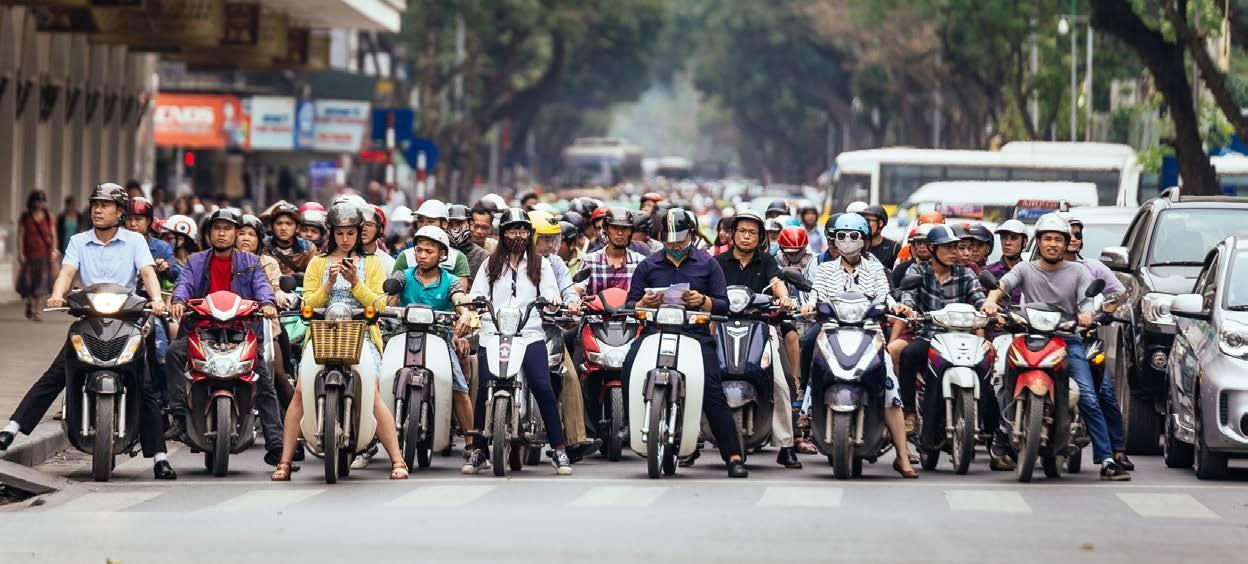
Summary of recommendations
For Financial Institutions and Investors:
• Harness innovative finance instruments, such as blended finance, guarantees and municipal green bonds, to unlock investment for climate-resilient infrastructure – ensuring alignment with social and environmental goals.
• Leverage global forums to spotlight the financing needs and opportunities in the global south.
For Engineers and Technical Experts:
• Integrate digital and AI tools and nature-based solutions as core components of climate-resilient infrastructure strategies – including modular construction, smart monitoring systems and green infrastructure.
• Prioritise monitoring, learning and accountability with robust resilience metrics and participatory evaluation frameworks to ensure projects deliver both social and climate outcomes.
For Policymakers and Community Leaders:
• Reframe infrastructure as a tool for climate justice and community resilience –moving beyond technical delivery to address social and environmental equity.
• Embed local knowledge and inclusive planning by centring community voices in project design and delivery, making solutions socially relevant and equitable.
• Bridge capacity gaps through technical training, institutional reforms and governance alignment with national climate adaptation plans and the Sustainable Development Goals.

Bridge capacity gaps and align with climate adaptation:
• Invest in technical training, institutional capacity and governance reforms to enable locally driven climate-resilient solutions.
Harness innovative finance and partnerships:
• Expand the use of blended finance, guarantees and municipal green bonds to unlock investment – and ensure these instruments align with social and climate goals.
Integrate digital tools and nature-based solutions:
• Mainstream modular construction, smart monitoring systems and nature-positive infrastructure as central components of resilient infrastructure strategies.
Prioritise monitoring, learning and accountability:
• Establish robust resilience metrics and participatory evaluation frameworks to ensure that projects deliver both social and climate outcomes.
Leverage global forums to drive change:
• Use the momentum of the 2025 FIDIC Global Infrastructure Conference in Cape Town and COP30 to champion the needs and leadership of the global south, building alliances and accelerating practical action.
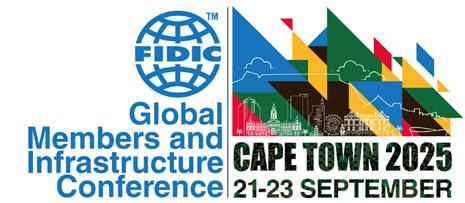
This report is more than an analysis of today’s infrastructure gaps, it also serves as a call for transformation.

The path forward demands that engineers, policymakers, investors and communities reimagine infrastructure as a catalyst for a more equitable and climate-resilient society.

/The global urgency


The global urgency /
The growing infrastructure gap in emerging economies
The infrastructure gap in emerging economies has become one of the defining challenges – and opportunities – of our era. Nearly one billion people worldwide still lack access to electricity, two billion are without safe water and over half the world’s population does not have reliable transport networks to connect them to economic opportunity and essential services (World Bank, 2023)1. These figures are not merely statistics, they represent the daily realities of communities whose potential is constrained by systems that are incomplete, under-resourced or increasingly overwhelmed.
This gap is both a crisis and a catalyst. It is a crisis because it entrenches social and economic disparities, making it harder for emerging economies to participate in global trade, grow economies, provide the jobs and skills needed to meet development goals and reduce poverty. But it is also a catalyst because the next decade could offer an unprecedented window of opportunity to close these gaps, intelligently, inclusively and sustainably.
1 billion 2 billion Half of the world
Emerging economies are at the epicentre of this challenge. Many are experiencing rapid urbanisation, with cities expanding at an astonishing pace. The UN projects that 90% of global urban growth by 2050 will occur in Africa and Asia, adding nearly 2.5 billion people to urban areas (United Nations, 2018)3. This surge creates enormous demand for new and upgraded infrastructure. Yet, if not managed thoughtfully, it also risks deepening spatial inequality, straining natural resources and reinforcing vulnerabilities to climate change.
Climate change further amplifies these stakes. From flooding in Jakarta to prolonged droughts in the Horn of Africa, climate shocks are testing the limits of existing infrastructure and disproportionately impacting the most vulnerable communities. As infrastructure systems face growing stresses, so too do the people who depend on them for basic needs and livelihoods.
At FIDIC, we see these pressures not as a call for incremental change, but as a mandate for transformative action. Infrastructure is not merely the physical backbone of society, it is a vehicle for realising human rights, advancing climate justice and fostering equitable development. Bridging these gaps will require more than funding. It will demand new partnerships that amplify local voices, innovative technologies that adapt to local contexts and an unwavering commitment to social and environmental inclusion.
This report is a call to the global community to invest in infrastructure that is not only efficient and resilient, but also just and future-ready. It is also an invitation to emerging economies themselves to champion solutions that reflect local priorities, leverage local knowledge and strengthen local capacity.

Rapid urbanisation, population growth, and climate pressures
Rapid urbanisation and population growth are reshaping the landscape of infrastructure needs in emerging economies. Urban populations are projected to double by 2050 across much of Sub-Saharan Africa and South Asia, driven by a combination of demographic momentum and rural-to-urban migration (UN-Habitat, 2022)4. These dynamics, while promising in terms of economic opportunity and innovation, pose significant challenges for inclusive and sustainable urban development.
Cities in emerging economies are becoming magnets for investment, culture and connectivity, yet many remain unprepared for the sheer scale of growth ahead. Urban centres are increasingly marked by informality and spatial inequality, with one in three urban residents in the global south living in slums or informal settlements (World Bank, 2023)5. These communities often lack basic services and are at heightened risk of climate impacts, creating a dual challenge of upgrading existing infrastructure and building new systems that meet the needs of expanding populations.
Simultaneously, climate change acts as a powerful risk multiplier. Rising temperatures, shifting rainfall patterns and intensifying storms are already testing the limits of urban resilience. In South Asia, for example, coastal cities like Mumbai and Dhaka face the threat of more frequent flooding and storm surges, putting millions at risk of displacement (IPCC, 2022)6. In Sub-Saharan Africa, prolonged droughts in rapidly growing urban corridors are straining already limited water and energy systems, while heatwaves are amplifying public health risks in densely populated informal settlements (African Development Bank, 2022)7
At the heart of these intertwined challenges lies a clear imperative – infrastructure systems must be designed and delivered to respond to demographic pressures, accommodate rapid urban expansion and withstand the intensifying climate shocks that threaten to reverse hard-won development gains. This means going beyond traditional models of infrastructure delivery to embrace solutions that are adaptive, inclusive and climate-resilient.
Simultaneously, climate change acts as a powerful risk multiplier. Rising temperatures, shifting rainfall patterns and intensifying storms are already testing the limits of urban resilience.











The global urgency /
Why this report now? Context and opportunity
The timing of this report is not incidental. The coming years present a unique convergence of global milestones and policy dialogues that will shape the trajectory of infrastructure development in emerging economies for decades to come.
FIDIC’s Global Infrastructure Conference and the G20 programme taking place in South Africa is set to place infrastructure at the forefront of the development agenda for the global south. It comes at a moment when stakeholders across regions are actively reassessing priorities, exploring innovative delivery models and seeking to leverage climate finance for infrastructure resilience.
Meanwhile, the upcoming COP30 in Brazil will sharpen the global focus on adaptation and climate finance – issues that intersect directly with infrastructure planning in vulnerable regions. For emerging economies, COP30 represents an opportunity to advocate for equitable climate adaptation funding and to demonstrate that infrastructure can serve as a lever for both climate resilience and inclusive economic growth.
These events take place against the backdrop of the 2030 Sustainable Development Goals (SDGs), which remain a central framework for national development planning and international cooperation. Infrastructure, especially in energy, water, transport and digital sectors, is not only critical to SDG 9 (Industry, Innovation and Infrastructure), but also underpins progress across nearly all other goals, from health and education to climate action and economic inclusion (United Nations, 2015)8

At the same time, the ongoing dialogue around the reform of finance mechanisms be they public sector, private equity or multilateral development banks (MDBs) as the landscape of infrastructure finance is shifting. There is growing recognition that MDBs and International Financial Institutions must move beyond traditional risk frameworks to unlock investment in fragile and climate-vulnerable economies, an agenda that resonates deeply with FIDIC’s commitment to strengthening local capacity and embedding climate justice in infrastructure delivery.
These global conversations, taken together, highlight both the urgency and the opportunity of this moment. They demand a new narrative, one that positions infrastructure not merely as a technical challenge, but as a tool for social equity, climate justice and economic transformation.

The global urgency /
Reframing infrastructure as a driver of social equity, climate justice and resilience
For too long, infrastructure has been viewed primarily as a technical domain, a realm of engineering specifications, financing mechanisms and physical assets. Yet the infrastructure choices we make, and the way we design and deliver these systems, have profound social and environmental implications. In this report, we argue that infrastructure must be reframed as a lever for societal equity, growth, nature and climate improvement and long-term resilience.
This reframing starts with a recognition of how infrastructure shapes lives.
Roads and railways connect people to markets and services.
Energy systems power economies and provide the foundation for digital inclusion and innovation.
Water and sanitation infrastructure determines who has access to basic human rights, and who remains vulnerable to disease and environmental hazards.
At its best, infrastructure can unlock opportunity and inclusion, at its worst, it can entrench inequality and environmental harm.
For emerging economies, often on the frontlines of climate impacts and demographic transitions, this dynamic is particularly stark. where there is not just an environmental challenge, but a social one. Infrastructure systems that fail to account for climate risks or to serve marginalised communities exacerbate existing inequalities, pushing already vulnerable populations further to the margins.
This is why societal, climate, nature and economic wellbeing must be integral to infrastructure planning. It means designing projects that anticipate and adapt to climate hazards while prioritising social inclusion and equitable access. It also means embedding local knowledge and community driven approaches, ensuring that solutions reflect real needs and amplify the voices of those most affected.
Delivering on this vision will require more than policy ambition or technical capacity alone. It calls for a renewed commitment across the global infrastructure community including engineers, contractors’ policymakers, investors and practitioners etc to translate these principles into action. This report draws on the experience and insights of that community to highlight how transformative infrastructure can be delivered in practice. In doing so, it underscores a simple but powerful premise. Equitable and climate-smart infrastructure is not just a moral imperative, it is essential to building societies that are resilient, prosperous and prepared for the future.
/Realities on the ground – challenges in emerging economies


Realities on the ground – challenges in emerging economies /
Access,
affordability and infrastructure inequality
Access to infrastructure is a foundational pillar of economic and social progress. In many emerging economies, however, significant disparities in availability and affordability continue to undermine inclusive development. While global investment in infrastructure has grown steadily over the past decade, its distribution remains deeply uneven, leaving many of the world’s poorest communities disconnected from basic services.
For instance, in Sub-Saharan Africa, only 48% of the population has access to electricity, compared to a global average of 90% (IEA, 2022)9. Water scarcity affects nearly 400 million people in the region, driven by a combination of climate change impacts, rapid population growth and chronic underinvestment in water infrastructure. In rapidly developing economies such as India, over 30% of urban residents still live in informal settlements without access to basic sanitation or drainage, despite significant infrastructure improvements in some urban areas.
Affordability remains another critical challenge. In some cities, low-income households spend more than 20% of their income on energy alone, forcing families to make difficult trade-offs between basic services and other essential needs. In Lagos, Nigeria, studies have shown that transport costs can absorb up to 40% of household income for informal workers, limiting access to employment and reinforcing spatial inequalities (IEA, 2022).
In Nairobi’s informal settlements, the high cost of water services has been a persistent barrier, with households paying up to five times more than those in formal neighbourhoods (World Bank, 2023)10.
Beyond physical and economic barriers lies a systemic governance challenge: infrastructure delivery that does not meaningfully engage local communities often fails to address their real needs. Top-down approaches, while expedient, risk excluding the very voices that can shape more locally responsive and context-appropriate solutions. Meaningful community participation is essential, not only for project success, but to ensure that infrastructure truly serves as a foundation for equity and inclusion.

Realities on the ground – challenges in emerging economies
Environmental vulnerabilities: Droughts, floods and heat
Emerging economies face acute and multifaceted environmental challenges that profoundly affect infrastructure systems and the communities they serve. Droughts, floods and extreme heat are no longer isolated events; they are part of a shifting climate baseline that demands urgent attention from policymakers, engineers and investors alike.

Droughts are becoming increasingly frequent and severe across Sub-Saharan Africa and South Asia, disrupting agricultural production, water availability and hydropower generation. In the Horn of Africa, for instance, a record-breaking drought has displaced millions and placed immense strain on already fragile water supply and irrigation infrastructure (UNICEF, 2023)12. These cascading impacts highlight how water scarcity intersects with broader issues of food security, health and economic stability. The FIDIC State of the World Report on Water Infrastructure (Tackling the Global Water Crisis 2021)13 previously examined these systemic vulnerabilities, emphasizing the urgent need for adaptive, sustainable water management solutions to mitigate both scarcity and excess. Many of its findings remain critically relevant today as water crises intensify across emerging economies.
Conversely, many coastal and riverine regions in Southeast Asia and Latin America face heightened risks of flooding. In Bangladesh, annual monsoon floods submerge vast areas, damaging transport networks, power lines and essential social infrastructure (World Bank, 2022). In cities like Jakarta and Manila, a combination of sea-level rise, extreme rainfall and land subsidence has created a growing vulnerability to urban flooding (Asian Development Bank, 2023)14. These recurrent disruptions can halt economic activity, threaten lives and push vulnerable households deeper into poverty.


Extreme heat poses a third, equally critical challenge. In parts of South Asia, North Africa, and the Middle East, cities are experiencing record-breaking temperatures that exceed safe thresholds for human health and strain energy and transport systems. In India, for example, a record heatwave in 2022 caused road surfaces to buckle, rail networks to warp and a surge in demand for cooling that strained already overburdened electricity grids (World Meteorological Organization, 2023)15. These physical impacts are often most severe in informal settlements, where residents have limited access to cooling solutions and are more exposed to heat stress and related health risks.

Realities on the ground – challenges in emerging economies
Institutional and technical capacity gaps
Robust institutional and technical capacity is essential for the success of infrastructure systems, from initial planning and financing to ongoing operation and maintenance. In many emerging economies, however, these capacities remain constrained, limiting the effectiveness and sustainability of infrastructure investments.
Institutional gaps often manifest as fragmented governance structures, limited inter-agency coordination and inconsistent regulatory frameworks. In Sub-Saharan Africa, for example, overlapping mandates among transport and energy authorities in Nigeria have contributed to project delays and inefficiencies in power sector expansion (African Development Bank, 2022). In Southeast Asia, municipal governments in Indonesia frequently lack the financial autonomy or technical capacity to oversee large-scale infrastructure projects, leading to challenges in water and sanitation service delivery in secondary cities (World Bank, 2023)16
Technical capacity gaps are equally critical. Engineering and construction expertise, particularly in climate-resilient design, digital project management and sustainability practices, is unevenly distributed across regions.
A survey by the Asian Development Bank found that nearly half of infrastructure agencies in emerging Asia reported difficulties in accessing skilled professionals for project design and implementation (Asian Development Bank, 2023)17.


In Latin America, limited technical capacity has hindered the adoption of nature-based flood management solutions, despite growing climate adaptation needs in cities such as Lima and Bogotá (Inter-American Development Bank, 2022)18.
These gaps have direct implications for infrastructure outcomes. Projects may not fully align with local needs or climate priorities, and cost overruns and delays become more frequent, eroding public and local trust and deterring future investment.
In Ghana, for instance, weak regulatory oversight and capacity constraints have delayed key transport infrastructure projects, impacting regional trade connectivity (African Union, 2022)19. Most critically, the potential of infrastructure to drive equitable growth and climate resilience is constrained when institutional and technical systems do not have the resilience to be able to adapt to emerging challenges.
For the infrastructure sector, bridging these capacity gaps requires a multifaceted approach. Investment in human capital and professional development is essential, as is fostering collaboration between public,

Realities on the ground – challenges in emerging economies
Inclusive infrastructure: Addressing gender, accessibility and social vulnerability
Inclusive infrastructure is fundamental to ensuring that the benefits of economic growth and development are shared equitably across all segments of society. Many emerging economies, however, continue to face significant gaps in designing and delivering infrastructure that meets the diverse needs of their populations, particularly women, persons with different abilities and marginalised communities.
Gender disparities in infrastructure access and use are well documented. In Sub-Saharan Africa and parts of South Asia, for example, women and girls in rural areas often spend hours each day collecting water and fuel because of inadequate infrastructure. This limits their educational and economic opportunities and reinforces cycles of poverty (UN Women, 2022)20. In urban areas, transport systems are frequently designed around male commuting patterns, overlooking the caregiving and household-related travel that women disproportionately understake (World Bank, 2022)21
Persons with different abilities face equally significant barriers. Globally, an estimated 15% of the population lives with some form of disability (WHO, 2023)22. Yet, inclusive design standards for transport networks, public buildings and digital services remain inconsistently applied, limiting access to employment, education and social participation. In Southeast Asia, for example, a lack of accessible public transport has been cited as a significant obstacle to economic participation and social inclusion for persons with disabilities (Asian Development Bank, 2023)23
Social vulnerability also extends to informal settlements and low-income communities, which often face compounded challenges in accessing reliable infrastructure services. In Latin American cities such as Lima and Bogotá, residents of informal neighbourhoods face higher costs and lower service quality for water, sanitation and energy, deepening inequalities and exposing them to greater health and safety risks (Inter-American Development Bank, 2022)24
These inequalities are not incidental. They reflect deeper systemic issues in how infrastructure is prioritised, designed and financed. Inclusive infrastructure requires moving beyond a purely technical focus to engage with the social dimensions of access and service delivery. This includes integrating gender and disability considerations into project design, embedding community engagement at every stage and using data to identify and address disparities.
For the infrastructure sector, investing in inclusive approaches brings both social and economic benefits. Infrastructure systems that respond to the needs of all users, including the most marginalised, are more resilient, sustainable and likely to deliver long-term economic and societal value.

Despite these challenges, there is growing momentum toward solutions that are both scalable and inclusive. Cities and rural communities alike are adopting decentralised energy models, leveraging digital tools for smarter service delivery, and investing in nature-based solutions to build resilience against climate risks. These promising approaches, explored in later sections, underscore how emerging economies are not just responding to infrastructure gaps but actively shaping a more sustainable future.
Realities on the ground – challenges in emerging economies
Case snapshots: Sub-Saharan Africa, Southeast Asia and Latin America
The challenges of access, affordability and climate vulnerability are experienced in unique ways across different regions. These brief case snapshots illustrate how these challenges manifest in practice and underscore the importance of context-specific, inclusive, and resilient approaches in infrastructure development.
Sub-Saharan Africa: Nairobi’s informal settlements

In Nairobi, Kenya, rapid urbanisation has outpaced formal infrastructure provision, particularly in informal settlements like Kibera and Mathare. Residents rely on informal water vendors and unregulated energy sources, often paying significantly higher prices for lower-quality services than those in formal neighbourhoods. Climate change further compounds these vulnerabilities, with frequent flooding disrupting transport and sanitation infrastructure, causing health risks and economic losses (Water and Sanitation for the Urban Poor, 2023)25. Recent initiatives by Nairobi’s county government and development partners have focused on upgrading water and sanitation systems in these informal areas, illustrating the critical role of targeted investment and community engagement in bridging infrastructure gaps.
Southeast Asia: Jakarta’s flood management challenges

Jakarta, Indonesia, faces some of the world’s most severe urban flood risks, driven by a combination of extreme rainfall, sea-level rise and land subsidence. Flooding events have repeatedly paralysed transport networks and damaged housing in low-income areas, disproportionately affecting vulnerable residents. The city has invested in large-scale infrastructure like sea walls and pumping stations, but experts argue that these must be complemented by nature-based solutions and inclusive planning to ensure long-term resilience (Asian Development Bank, 2023)26. This highlights the growing recognition that technical capacity, governance and social inclusion are as vital as physical infrastructure in achieving sustainable urban resilience.
Latin America: Lima’s informal water markets

In Lima, Peru, water scarcity and rapid urban growth have forced many residents of informal settlements to rely on expensive water vendors, paying up to 20 times more than those with formal connections (Inter-American Development Bank, 2022)27. Limited institutional capacity and financing gaps have historically constrained efforts to extend formal water services to these communities. However, recent efforts to integrate community-led solutions, combined with climate adaptation funding from multilateral development banks, have begun to close this gap. This underscores the importance of targeted financing and inclusive partnerships in addressing entrenched infrastructure inequalities.


These regional case snapshots demonstrate that while challenges vary across contexts, the core issues – of governance, capacity, social inclusion and climate resilience – are shared. They also show that truly transformative infrastructure systems emerge when technical solutions are integrated with inclusive planning and local knowledge.
/Scalable and affordable technologies


Scalable and affordable technologies /
Modular and prefabricated construction
Modular and prefabricated construction approaches given the right conditions can act as key enablers of affordable, scalable and climate-resilient infrastructure in emerging economies. These methods involve producing building components off-site and assembling them rapidly on-site, offering significant advantages in speed, cost efficiency and environmental performance compared to traditional construction.
The benefits of modular construction are particularly relevant in contexts where infrastructure demand is outpacing conventional delivery. In East Africa, for example, modular construction has been leveraged to address urgent gaps in healthcare infrastructure. During the Covid-19 pandemic, Rwanda deployed prefabricated hospital units to expand capacity rapidly and meet rising health service needs (African Development Bank, 2022)28. Similarly, in India, modular classrooms have been constructed to quickly scale access to primary education in rural and peri-urban areas, where demand has long exceeded conventional build capacity (World Bank, 2023)29.
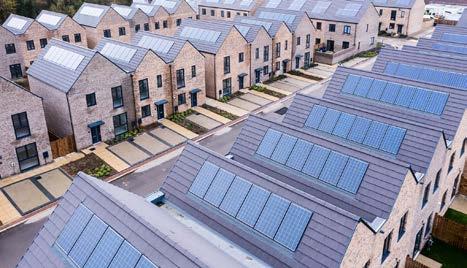
From an environmental perspective, modular approaches can significantly reduce construction waste and limit the carbon footprint of infrastructure delivery. A study by the International Finance Corporation found that modular construction can reduce embodied carbon by up to 45% compared to traditional concrete and steel structures, while also lowering operational costs and improving building quality (IFC, 2023)30. These advantages align well with global efforts to decarbonise the built environment and meet climate commitments under the Paris Agreement.
The
adoption of modular and prefabricated construction in emerging economies is not without challenges. High upfront investment in manufacturing facilities and supply chain logistics can create barriers, particularly in markets with limited access to affordable financing. Additionally, regulatory frameworks and building codes often lag behind technological advances, constraining innovation and uptake.

Scalable and affordable technologies /
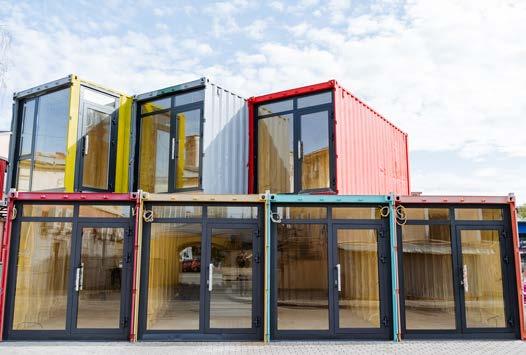
For the infrastructure sector, integrating modular and prefabricated solutions requires not only technical expertise but also enabling policies and partnerships that support adoption at scale. Public-private partnerships can play a vital role in overcoming financing challenges, while standardisation efforts and supportive regulation can help mainstream these approaches into national infrastructure pipelines.
By leveraging these approaches, emerging economies have the potential to close infrastructure gaps more rapidly and cost-effectively, while also building the foundations for a more resilient and sustainable future.
While academic research, including studies from the Laing O’Rourke Centre at the University of Cambridge (Jansen van Vuuren and Middleton, 2020)31, highlights challenges in robustly benchmarking environmental impacts in modular construction—such as material use, waste reduction, and carbon emissions—the potential for improved sustainability remains a key area of exploration. Many industry case studies and practical applications suggest that off-site construction can reduce construction waste, enhance resource efficiency, and improve energy performance, particularly when paired with optimized supply chains and circular economy principles. However, the full extent of these benefits depends on project-specific implementation, material sourcing, and life-cycle analysis, underscoring the need for continued research and standardized performance metrics to substantiate broad claims about modular construction’s environmental advantages.

Many advocates of modular and off-site construction hope that these methods will deliver significant benefits—such as enhanced process control, reduced waste, and lower carbon emissions. However, robust empirical evidence to conclusively support these claims remains limited, with ongoing research highlighting challenges in benchmarking environmental performance. While modular approaches may offer efficiencies in certain contexts, their actual impact depends on material sourcing, implementation practices and life-cycle assessments, underscoring the need for further investigation and standardised evaluation frameworks.

Scalable and affordable technologies /
Off-grid and decentralised energy systems
Off-grid and decentralised energy systems have become increasingly critical in addressing energy access challenges in emerging economies. These systems, ranging from small-scale solar home kits to mini-grids serving entire villages, offer flexible and locally tailored solutions that can accelerate progress towards universal energy access and climate goals.

In Sub-Saharan Africa, where nearly 600 million people lack reliable electricity, off-grid solar systems have provided a lifeline for many rural and peri-urban communities (International Energy Agency, 2023)32. In countries like Kenya and Nigeria, decentralised solar mini-grids and home systems have not only expanded access to clean energy but also spurred local entrepreneurship and improved health and educational outcomes by powering clinics and schools (Power for All, 2022)33
These systems also offer significant climate and economic benefits. Decentralised renewables reduce dependence on diesel generators and other high-emissions energy sources, helping to lower greenhouse gas emissions and air pollution. A recent study by the African Development Bank found that decentralised energy systems in West Africa can reduce CO2 emissions by up to 50% compared to conventional grid extension solutions (AfDB, 2023)34. Moreover, they can be deployed faster and more cost-effectively, particularly in remote or underserved regions.
Southeast Asia presents similar opportunities. In Indonesia and the Philippines, decentralised renewable energy projects have been critical in reaching island and mountainous communities where grid connections are logistically challenging and economically unviable (Asian Development Bank, 2023)35. These projects highlight the role of context-specific energy planning and the importance of integrating decentralised solutions into broader national electrification strategies.
Challenges remain in scaling up these systems sustainably.
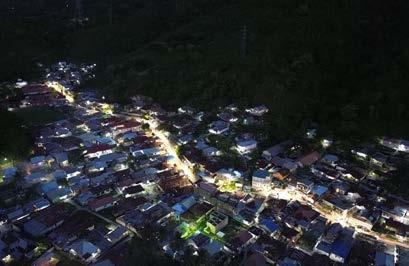
Access to finance to fund capital costs is a persistent barrier, especially for smaller community-led projects, despite the longer term operational and societal benefits. Technical capacity gaps in installation, maintenance and system management can also limit long-term reliability. Addressing these constraints requires integrated policy frameworks that prioritise decentralised solutions as part of national energy plans, along with targeted investment in training and technical support.

For infrastructure professionals and policymakers, the rise of decentralised energy solutions underscores the need for flexible and adaptive infrastructure systems that respond to the diverse realities of communities. By bridging gaps in energy access through innovative, locally anchored approaches, off-grid systems are helping to lay the foundation for more resilient and inclusive development in some of the world’s most dynamic regions.
Scalable and affordable technologies /
Smart water and sanitation innovations
Reliable water and sanitation services are critical to health, economic development and climate resilience. Yet, in many emerging economies, rapid urbanisation, climate impacts and governance gaps have left millions without safe and affordable water and sanitation. Smart water and sanitation innovations are increasingly being seen as transformative solutions to bridge these gaps and build more resilient and equitable systems.
Smart technologies, including real-time sensors, digital monitoring tools and data-driven management systems, are enabling more efficient and adaptive water service delivery. In cities like Dakar, Senegal, water utilities have deployed sensor-based leak detection systems to reduce water losses, which in some networks exceed 40% of total supply (World Bank, 2022)36. These innovations are not only improving water security but also reducing operational costs and enhancing service reliability.
Sanitation is another area where smart innovations are making a difference. In India, digital platforms have been used to map and monitor informal sanitation facilities in urban slums, providing critical data to guide targeted investments and reduce public health risks (Asian Development Bank, 2023)37. In Kenya, decentralised wastewater treatment systems that incorporate smart monitoring are enabling safe water reuse in water-scarce communities, illustrating the potential for technology to drive climate adaptation and sustainable resource management (WSUP, 20233)38.
India example: Community-led sanitation management in Delhi

Project Raahat, initiated by Enactus Shaheed Sukhdev College of Business Studies in collaboration with the Delhi Urban Shelter Improvement Board, focuses on the management of Community Toilet Complexes (CTCs) in Delhi’s slum areas39. The project emphasises operational management, aesthetic improvements and community sensitisation activities to promote hygiene and reduce open defecation. Innovative features include a ticket system to make toilet use affordable and the use of a cartoon character, Raahi, to educate children about sanitation. These efforts have significantly improved sanitation conditions in the targeted communities.
Kenya: Decentralized wastewater monitoring in Kisumu

In Kisumu, Kenya, a study published in PLOS Water evaluated the effectiveness of decentralised wastewater monitoring for SARS-CoV-2 as part of Covid-19 surveillance40. The research involved collecting wastewater samples from various community-based locations, including hospitals and public toilets, to detect the presence of the virus. The findings demonstrated that decentralised wastewater monitoring could serve as an early warning system for Covid-19 outbreaks, highlighting the potential of such systems in enhancing public health responses in resource-limited settings.

Scalable and affordable technologies /
Digital tools and AI for infrastructure monitoring and optimisation
Digital technologies are playing an increasingly critical role in transforming infrastructure systems, offering powerful tools to enhance efficiency, extend asset life and build climate resilience. In emerging economies, where resource constraints and rapid urbanisation intensify infrastructure pressures, digital monitoring and optimisation tools are essential to bridge capacity gaps and ensure sustainable delivery.
Remote sensing, data analytics and digital twin modelling are enabling infrastructure managers to anticipate risks and optimise performance in real-time.
In East Africa, water utilities in Uganda and Tanzania are using smart metering and remote sensors to detect leaks and manage water distribution more efficiently, reducing non-revenue water losses and improving access for underserved communities (World Bank, 2023)41. In South Asia, digital twin technologies are being deployed in transport networks to model traffic flows, identify congestion hot spots and inform more adaptive urban mobility planning (Asian Development Bank, 2023)42
These tools also offer critical insights for climate adaptation. In coastal regions of Southeast Asia, digital flood modelling platforms are helping local governments plan resilient infrastructure investments by simulating extreme weather scenarios and identifying vulnerabilities in transport and water systems (International Finance Corporation, 2022)43. Such data-driven approaches are vital to ensure that climate risks are not just recognised but embedded into infrastructure decision-making.
A notable example of digital flood modelling enhancing climate adaptation in Southeast Asia is Singapore’s “Virtual Singapore” initiative44. This comprehensive 3D digital twin of the city-state integrates real-time environmental and infrastructural data, enabling authorities to simulate extreme weather events, including flooding scenarios. By leveraging this platform, Singapore can identify vulnerabilities in its transport and water systems, facilitating informed decisions for resilient infrastructure investments.
In the Philippines, Project NOAH (Nationwide Operational Assessment of Hazards) serves as another significant example45. This disaster risk reduction programme employs advanced technologies to provide real-time flood forecasts and hazard maps, assisting local governments in planning and implementing effective flood mitigation strategies.
These initiatives exemplify how digital tools are instrumental in aiding Southeast Asian countries to adapt to climate change by enhancing the resilience of critical infrastructure against extreme weather events.
The uptake of these digital solutions, however, is not without challenges. Limited digital literacy and uneven access to Information and Communication Technology (ICT) infrastructure in many regions can constrain adoption. Furthermore, data governance and privacy frameworks often lag behind technological advances, raising concerns about equitable access to data and the security of critical infrastructure systems.

Addressing these challenges requires a concerted effort to build digital skills within infrastructure agencies and local communities, as well as to foster inclusive public-private partnerships that can unlock investment in digital tools and data systems. For infrastructure professionals, embracing digital innovation is not merely a technical upgrade, it is a critical enabler of more transparent, efficient and climate-ready infrastructure systems.
Ultimately, digital monitoring and optimisation tools are not just about technology. They represent a broader shift toward data-informed decision-making and collaborative governance in infrastructure development. As this report explores, leveraging these tools can help emerging economies build the resilient, adaptive infrastructure systems that are essential in an era of accelerating climate and social change.
Case studies: Local innovations in India, South Africa and Brazil
The potential of scalable and affordable technologies in emerging economies is best illustrated through real-world innovations that adapt global solutions to local contexts. These case studies highlight how local leadership, tailored design and community engagement can deliver infrastructure outcomes that are both climate-resilient and socially inclusive.
India: Solar-powered cold storage for smallholder farmers
In India, post-harvest losses in agriculture have long been a major challenge for smallholder farmers, driven by a lack of affordable cold storage solutions. Recent innovations in solar-powered cold storage units have provided a scalable and cost-effective solution, reducing spoilage and boosting farmer incomes (International Renewable Energy Agency, 2023)46. In states like Uttar Pradesh and Bihar, these systems have been deployed in local cooperatives, integrating modular technology and digital monitoring to ensure reliable performance even in remote, off-grid areas. This innovation illustrates how decentralised energy and smart technologies can address intersecting challenges in food security, livelihoods, and climate adaptation.
South Africa: Modular healthcare infrastructure in rural areas
South Africa has been at the forefront of leveraging modular construction to close infrastructure gaps in underserved communities. The Limpopo Modular Health Clinics initiative, for example, has delivered prefabricated, fully equipped clinics in remote areas with limited access to healthcare (African Development Bank, 2023)47. These clinics can be deployed in a matter of weeks, compared to years for traditional brick-and-mortar construction. Crucially, the approach has been paired with capacity-building programmes for local healthcare workers, highlighting how modular technologies can be part of holistic infrastructure solutions that strengthen community resilience.

Scalable and affordable technologies /
Brazil: Digital water management in informal settlements
In Brazil’s favelas, access to safe water and sanitation is a persistent challenge, compounded by informal settlement patterns and governance gaps. The Água Carioca initiative in Rio de Janeiro has pioneered a digital water management system that combines real-time monitoring with community-led data collection to improve water access and quality (Inter-American Development Bank, 2023)48. By integrating smart technologies with participatory planning, the project has reduced water losses and improved health outcomes in some of the city’s most vulnerable communities. This case demonstrates how digital tools can be deployed in tandem with inclusive governance to deliver equitable infrastructure services.
These examples underscore a shared lesson – technologies alone do not guarantee impact. Success depends on integrating technical innovation with local knowledge, inclusive engagement and supportive policies that prioritise equity and climate resilience. For infrastructure leaders and practitioners, these case studies offer practical insights into how scalable solutions can be adapted to diverse contexts and how, when thoughtfully applied, they can unlock real progress in bridging infrastructure divides. Looking ahead, these local innovations provide a blueprint for future investments that align climate adaptation, social equity and economic development in the world’s most dynamic regions.

/Building local capacity and human capital


/Building local capacity and human capital
Community-driven infrastructure models
The effectiveness and resilience of infrastructure systems depend not only on technical excellence and financial resources but also on the meaningful involvement of the communities they serve. In many emerging economies, community-driven infrastructure models have emerged as critical pathways to ensure that projects are locally grounded, socially inclusive and adaptable to changing needs.
Community-driven approaches involve local stakeholders from municipal governments to grassroots organisations and informal community leaders in every stage of the infrastructure lifecycle. These models prioritise participatory planning, shared decision-making and the harnessing of local knowledge and labour. This not only builds trust and social cohesion but also ensures that infrastructure investments reflect real community priorities and can adapt to future challenges.
Examples from across the global south highlight the transformative impact of these models. In India’s rural regions, for example, the Mahatma Gandhi National Rural Employment Guarantee Act (MGNREGA) has supported the creation of small-scale water, road and climate adaptation projects designed and implemented by local communities (World Bank, 2022)49. In Kenya’s informal settlements, community-based water committees have played a vital role in managing shared water resources, reducing costs and improving service reliability through collective action (WaterAid, 2023)50
Community-driven models also build local ownership and capacity in ways that traditional, top-down projects often cannot. In Latin America, participatory budgeting initiatives in cities like Porto Alegre, Brazil, have enabled communities to allocate funds for local infrastructure priorities, strengthening accountability and governance in the process (Inter-American Development Bank, 2023)51. In West Africa, farmer-led irrigation cooperatives have transformed degraded landscapes into productive agricultural zones, highlighting how community agency can unlock environmental and economic benefits (African Development Bank, 2022)52
For the infrastructure sector, these examples underscore the value of partnerships that go beyond contracts to build shared understanding and long-term resilience. Engineers and project managers working with community-driven models must adapt their roles from technical experts to facilitators and knowledge partners, supporting locally defined goals and embedding equity into every stage of delivery.
Looking ahead, integrating community-driven models into broader national and regional infrastructure strategies can help create systems that are more equitable, responsive and climate-ready. For policymakers, this means creating regulatory environments and financing mechanisms that enable community leadership to thrive. For practitioners, it means valuing social capital as much as technical and financial capital and recognising that inclusive infrastructure is ultimately smarter, more sustainable infrastructure.

/Building local capacity and human capital
Local training, apprenticeships and knowledge transfer
A sustainable and resilient infrastructure sector relies not only on physical assets but also on the skills and expertise of the people who design, build and maintain them. In emerging economies, investing in local training and apprenticeships alongside knowledge transfer from international and regional partners shows how crucial it is to building the human capital needed to deliver transformative infrastructure outcomes.
Training and apprenticeships provide pathways for local workers, particularly youth and marginalised groups, to enter the infrastructure workforce and gain valuable technical skills. In East Africa, for example, public works programmes in Tanzania have integrated construction skills training for young people, creating employment while also addressing local capacity gaps in road and water projects (International Labour Organization, 2022)53

In Southeast Asia, the Philippines’ Technical Education and Skills Development Authority (TESDA) has partnered with private engineering firms to offer apprenticeships in green building practices, preparing graduates for roles in sustainable infrastructure delivery (Asian Development Bank, 2023).
Knowledge transfer is equally critical, enabling emerging economies to leapfrog traditional models and integrate innovative solutions more quickly. In Latin America, knowledge-sharing partnerships between regional universities and engineering consultancies have advanced climate-resilient transport and water management practices in Colombia and Peru (Inter-American Development Bank, 2023). In West Africa, twinning arrangements between local water utilities and international engineering firms have accelerated the adoption of digital water management tools, bridging gaps in technical expertise while strengthening local ownership of infrastructure solutions (African Development Bank, 2023)54
Beyond technical skills, these initiatives help build a broader culture of learning and collaboration that is essential for adapting to the complexities of climate change and rapid urbanisation. They also play a vital role in addressing social inequalities by opening opportunities for women and underrepresented groups to enter and thrive in the infrastructure sector.
For policymakers and infrastructure leaders, the lesson is clear. Investing in people is as essential as investing in projects. Sustainable infrastructure outcomes are built on a foundation of local capacity, not just to implement today’s projects, but to sustain, adapt and innovate in the face of tomorrow’s challenges.

/Building local capacity and human capital
FIDIC has played a crucial role in this landscape, setting the global standard for contracts that guide the procurement and delivery of infrastructure. Its suite of internationally recognised contracts and guidance documents has been widely adopted and adapted by governments and private sector actors alike, helping to promote fairness, quality and accountability in infrastructure delivery. By embedding these standards within local professional bodies and training institutions, FIDIC has supported capacity building and contributed to the strengthening of national systems for infrastructure development.
In Nigeria, for example, the Council for the Regulation of Engineering (COREN) has expanded its accreditation and professional development programmes, aligning national standards with global best practices and supporting the delivery of resilient infrastructure (COREN, 2023)55. Similarly, in Kenya, the Institution of Engineers of Kenya (IEK) has partnered with regional universities to integrate climate adaptation and digital tools into civil engineering curricula, preparing graduates to design infrastructure fit for a changing climate (World Bank, 2023)56
Universities are also central to bridging the gap between research and practice. In Latin America, universities in Chile and Colombia have developed joint research hubs with public agencies to pilot nature-based solutions in urban planning, producing replicable models that can be scaled across the region (Inter-American Development Bank, 2022)57. In Southeast Asia, regional engineering schools have begun to incorporate gender and social inclusion modules into infrastructure management degrees, building the social dimensions of sustainable infrastructure into technical education from the outset (Asian Development Bank, 2023)58.
Programmes like FIDIC Academy’s online and in-person courses can complement these local efforts, providing internationally recognised certifications and technical updates to support national training agendas. In addition, collaborative partnerships between local and international institutions, private sector actors and professional associations.
Persistent challenges, however, remain. Limited funding, outdated facilities and gaps in research capacity can constrain the ability of engineering institutions and universities to meet evolving sector needs. Addressing these challenges requires sustained investment and an inclusive approach to developing local talent and leadership.
For the global infrastructure sector, the strengthening of these institutions is not merely a question of workforce development. It is about building the intellectual and social capital needed to design and deliver infrastructure systems that are both inclusive and resilient. Supporting engineering institutions and universities is, therefore, an investment in the leadership and innovation that will shape the next generation of infrastructure solutions.
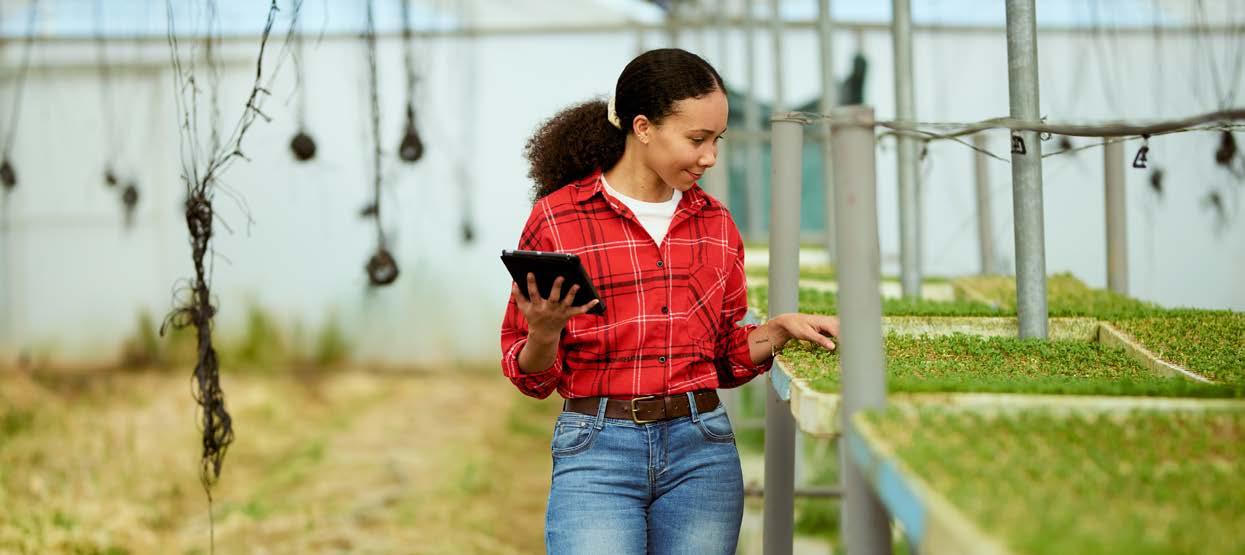
/Building local capacity and human capital
Inclusive skills development and gender-balanced capacity building
Inclusive skills development and gender-balanced capacity building are essential pillars of sustainable infrastructure delivery. They ensure that the benefits of infrastructure investment reach all segments of society and that local communities are empowered to play an active role in shaping and maintaining these critical assets.

In many emerging economies, women and marginalised groups continue to face barriers to participation in the infrastructure sector from technical training and apprenticeships to leadership and decision-making roles. For instance, in sub-Saharan Africa, women make up only about 15% of the engineering workforce, reflecting both cultural and systemic challenges (World Bank, 2023)59. Yet, evidence shows that when women and underrepresented groups are engaged in infrastructure planning and delivery, projects are more likely to address community needs and generate broader social and economic benefits.
Efforts to address these imbalances are gaining momentum. In Latin America, initiatives like Peru’s “Construyendo Igualdad” (Building Equality) programme have integrated gender-sensitive policies into public infrastructure projects, increasing women’s participation in technical roles and fostering more inclusive procurement practices (Inter-American Development Bank, 2023)60. In South Asia, India’s “Mahila Shakti Kendra” initiative has combined skills development with digital literacy training to enable rural women to participate more actively in local infrastructure projects and governance (Asian Development Bank, 2023)61
Beyond gender, inclusive skills development must also account for other forms of social disadvantage, such as disability, ethnicity, and rural-urban disparities. In Kenya, targeted technical training programmes have worked to address the exclusion of persons with disabilities from construction and transport sector jobs, both by adapting training content and by collaborating with disability rights organisations (African Development Bank, 2023)62

For infrastructure professionals and policymakers, the message is clear equitable infrastructure outcomes depend on equitable capacity-building. This means embedding inclusion as a core objective, not as an afterthought, in training, recruitment and leadership development.
As the infrastructure sector navigates the dual challenges of rapid urbanisation and climate change, inclusive skills development is not only a moral imperative but a practical necessity. Building capacity that reflects the diversity of the communities that infrastructure serves will be critical to delivering projects that are resilient, just and future-ready.

/Building local capacity and human capital
Examples: TVET in Rwanda and Kenya and institutional capacity building in Bangladesh
The transformative power of targeted capacity-building initiatives is vividly illustrated by recent examples from emerging economies. These initiatives demonstrate how technical and vocational education and training (TVET) programmes, combined with institutional strengthening, can help bridge persistent gaps in skills, governance and long-term infrastructure resilience.

In Rwanda, the government’s flagship TVET policy has created new pathways for young people and women to enter the infrastructure workforce. Supported by international partners and national engineering bodies, Rwanda’s Integrated Polytechnic Regional Centres (IPRCs) offer hands-on training in areas such as sustainable construction, renewable energy systems and water resource management (African Development Bank, 2023)63. These programmes have not only improved the employability of graduates but have also aligned skills development with national climate adaptation and digital transformation priorities.
Kenya has also emerged as a leader in aligning TVET with climate-resilient infrastructure delivery. Through the Kenya Climate-Smart Agriculture Project, technical colleges have introduced modules on climate-resilient construction and project management, providing rural communities with the skills to implement water conservation, irrigation and nature-based solutions (World Bank, 2023)64. These initiatives have empowered local communities to actively participate in shaping infrastructure investments that reflect local priorities and ecological realities.
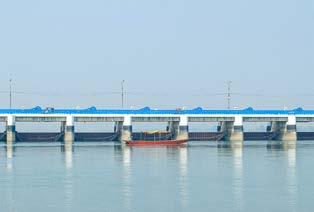

In Bangladesh, capacity-building efforts have focused on institutional reform and upskilling at the policy level. The Bangladesh Delta Plan 2100, a comprehensive strategy for climate-resilient infrastructure and water management, has integrated capacity-building for civil servants and local engineers as a core component (Asian Development Bank, 2023)64 Workshops and twinning arrangements with regional universities have built the skills needed to translate global adaptation frameworks into locally grounded, context-sensitive strategies.

After all, what good is world-class engineering if it doesn’t meet the needs of the people it is built to serve? These examples underscore a shared lesson that capacity building cannot be a standalone effort. It must be woven into broader strategies for infrastructure planning, climate resilience and inclusive growth.
It is not only about developing technical skills but also about fostering a culture of continuous learning, leadership and accountability across institutions and communities. These lessons are increasingly evident in conversations with practitioners and local leaders across the global south, highlighting the urgency – and the opportunity – to embed capacity building into every stage of infrastructure development.
/Resilient investment models


/Resilient investment models
Financing gaps and reform
One of the most persistent challenges facing infrastructure development in emerging economies is the chronic mismatch between ambitious plans and the funding needed to make them real. While the scale of infrastructure investment required is vast and estimated at over $1.7 trillion annually for developing countries alone (World Bank, 2023)65 the flow of capital remains uneven and constrained by structural barriers.
A report from FIDIC and EY, launched in September 2023 at FIDIC’s Global Infrastructure Conference in Singapore, revealed the massive investment gap in sustainable infrastructure globally. The report, Closing the Sustainable Infrastructure Gap to Achieve Net Zero, found that a total investment of around $139 trillion is needed by 2050 to reach net zero targets, with a gap of $64 trillion compared to current investment trajectories. This underscores the urgent need for innovative financing structures and reforms to the multilateral development bank system to unlock and direct these essential resources towards climate-resilient and socially just infrastructure in emerging economies.
In work with policy and engineering communities, it has become clear that these financing gaps can stall critical projects, from climate-resilient transport corridors in Africa to off-grid water systems in Southeast Asia. These gaps are not merely financial shortfalls – they represent lost opportunities for communities to build resilience and thrive.
MDBs have historically and continue to play a crucial role in bridging these gaps, providing both capital and a framework for technical support. However, there is growing recognition that with growing public debt and economic uncertainty the system itself needs reform to meet the scale and complexity of today’s infrastructure challenges. Criticisms have focused on slow disbursement processes, overly risk-averse lending practices and frameworks that sometimes prioritise traditional large-scale projects over locally driven, innovative solutions.
Reform and investment efforts are gaining momentum. For example, the G20’s recent push for a “triple agenda” which involved MDBs and IFIs and mobilising more private capital, strengthening support for global public goods and enhancing country-level effectiveness, signals a shift toward more dynamic and inclusive financing (G20, 2023)66. Regional banks like the African Development Bank are also pioneering new models, such as climate adaptation bonds and blended finance facilities, to crowd in private investment and local capital.

Beyond policy reform, there is a growing appreciation for the need to make financing not only more available but more equitable and accessible. For communities on the frontlines of climate change and urban growth, affordable and transparent financing is essential to ensure that infrastructure projects meet their needs and aspirations. This means that reforms must be guided not only by macroeconomic metrics but by the lived realities of the communities these investments are meant to serve.
As we will explore in this chapter, closing financing gaps and reimagining the roles of various finance institutions is not simply a question of moving money. It is about creating an enabling environment that respects local contexts, empowers communities and ensures that infrastructure investment becomes a driver of inclusive and sustainable growth, not another layer of inequality.

/Resilient investment models
Blended finance, guarantees and public-private partnerships
As emerging economies work to close the persistent financing gaps in infrastructure, blended finance, guarantees and Public-Private Partnerships (PPPs or P3) have gained renewed urgency and attention. These tools are not new, but they have evolved into critical instruments for mobilising capital, sharing risk and bringing innovative solutions to scale.
Blended finance is the strategic use of public or concessional funds to de-risk investments and attract private capital and has shown promise in catalysing climate-resilient and socially inclusive infrastructure projects.
In Latin America, for instance, the Emerging Markets Infrastructure Fund has combined public seed capital with private investment to deliver renewable energy and water systems to underserved communities. Similarly, in East Africa, blended finance structures have supported the expansion of decentralised solar mini-grids, unlocking energy access in remote areas that have long been beyond the reach of traditional grid infrastructure (World Bank, 2023)67
Guarantees, meanwhile, remain a crucial yet underutilised tool for de-risking projects and reducing financing costs. Research has shown that well-designed guarantee schemes can lower the cost of capital by up to 30%, making previously unbankable projects viable (African Development Bank, 2022)68. Challenges in governance and implementation, however, continue including limited capacity to design guarantee structures and align them with local priorities, continue to constrain their use.
Public-private partnerships have also taken on new forms and relevance. In Kenya, the Nairobi-Nakuru-Mau Summit Highway PPP has successfully mobilised private finance while embedding local employment and gender inclusion targets (African Development Bank, 2023)69. In India, hybrid PPP models have enabled the delivery of metro systems in cities like Pune and Lucknow, blending public oversight with private sector efficiency to meet growing urban mobility demands (Asian Development Bank, 2023)70.
Yet for all their promise, these models are not panaceas. Experience has shown that poorly structured PPPs can exacerbate inequalities and fiscal risks if not carefully designed and monitored. That is why governments, financiers and technical partners increasingly emphasise the need for robust governance, local capacity-building and meaningful community participation as essential preconditions for success.
Additionally, emerging models of capital extraction—where developers are required to fund local infrastructure improvements as a condition of project approval—are also being explored as part of innovative financing solutions in Asia and increasingly in Western countries.
The most successful blended finance and PPP initiatives are those that are rooted in local needs and co-created with the communities they serve. These approaches go beyond financing to become frameworks for shared accountability and social value creation, critical elements in building infrastructure that is both financially sustainable and socially inclusive.

/Resilient investment models
Climate finance – rethinking risk in fragile economies
For many emerging economies, climate change is not a distant concern it is an immediate and compounding risk. From devastating floods in South Asia to persistent droughts in the Sahel, climate impacts are already testing the resilience of infrastructure systems and the communities they serve. Yet for all their urgency, climate-resilient infrastructure projects in fragile contexts still face a critical barrier, the perception of heightened financial risk.
MDBs and IFIs have historically been among the most important financiers of climate adaptation and resilience projects. Traditional risk frameworks and lending criteria, however, often discourage investment in the very regions that need it most. Countries experiencing conflict, political instability, or severe climate vulnerability frequently struggle to secure the concessional financing or risk guarantees needed to advance transformative infrastructure solutions.
Emerging reform initiatives are beginning to challenge this paradigm, which is being championed by the MDBs. The World Bank’s recent climate finance roadmap, for instance, explicitly calls for a rethink of how risk is assessed in fragile economies, proposing tailored risk-sharing instruments and a shift toward resilience as a primary investment criterion (World Bank, 2023)71. Similarly, the African Development Bank has piloted climate adaptation bonds in partnership with local governments, demonstrating how innovative financing models can be structured to address both climate and fragility risks.
Importantly, these shifts are not just about unlocking new capital flows. They are about changing mindsets and moving away from risk-averse, one-size-fits-all models towards approaches that recognise the dynamic realities of emerging markets. In this context, MDBs have a unique role to play, not only as financiers, but as conveners and champions of new climate risk methodologies that prioritise the voices and needs of frontline communities.
This rethink of risk is especially relevant for infrastructure professionals and policymakers in emerging economies. As experience has shown, the best-designed projects can still falter if financial risk perceptions make them too costly or complex to implement. By integrating more holistic, climate-sensitive approaches to risk – and by working in partnership with local institutions and technical partners – MDBs can help unlock the full potential of infrastructure as a catalyst for inclusive growth and resilience.
Innovative municipal or city-level funding
While national and multilateral funding remain central to large-scale infrastructure development, municipalities and cities are increasingly emerging as critical drivers of innovative financing approaches. As urban centres become the engines of population growth, climate adaptation and social inclusion, empowering them with tailored financial tools is essential to unlock their potential.
One of the most promising trends in this space has been the rise of municipal green bonds and other city-level financing mechanisms. In South Africa, the City of Cape Town issued Africa’s first green bond to fund climate adaptation measures, including water conservation and flood resilience infrastructure (City of Cape Town, 2023)72. This model has since inspired similar initiatives across the continent, highlighting how local governments can leverage financial markets to address climate challenges directly.

City-level climate funds and pooled financing models have also gained traction. In Indonesia, the Subnational Pooled Financing Facility has enabled small and medium-sized cities to collectively access capital markets, reducing borrowing costs and enabling investment in sustainable transport and resilient water systems (World Bank, 2023)73. In Colombia, Medellín’s municipal climate fund has blended public and private resources to support low-carbon transport, green public spaces and energy-efficient buildings, all driven by local priorities and community engagement (IDB, 2023)74
/Resilient investment models
These examples underscore a shift towards recognising cities as central actors in the global infrastructure landscape and not simply as implementers of national plans, but as key stakeholders, innovators and leaders in their own right. By granting municipalities the financial autonomy and technical support they need, national and multilateral institutions can unlock a wave of localised, climate-smart investments that directly respond to urban challenges.
For infrastructure professionals and policymakers, these models offer crucial lessons. Local financial innovation, when coupled with robust governance and community participation, can create infrastructure that is more resilient, more equitable and more attuned to the complex realities of 21st-century cities.
Climate-linked bonds and outcome-based financing models
As infrastructure financing continues to evolve, climate-linked bonds and outcome-based financing models have emerged as powerful tools for aligning financial incentives with sustainability and resilience outcomes. These approaches move beyond traditional project finance, linking capital flows directly to the achievement of measurable environmental and social impacts.
Climate-linked bonds, for example, have gained prominence as a mechanism for channelling investment towards climate adaptation and mitigation. Nigeria’s sovereign green bond, the first of its kind in Africa, raised over $60m to support renewable energy, afforestation and resilient agricultural practices (Nigerian Ministry of Finance, 2023)75. Similarly, Chile’s green bonds have mobilised funding for sustainable urban transport and water infrastructure, demonstrating how climate-linked debt instruments can be scaled to national and regional priorities (World Bank, 2023)76.
Outcome-based financing models, including social impact bonds and pay-for-success contracts, are also expanding in the infrastructure space. In Latin America, these models have been applied to support water and sanitation infrastructure, with repayment structures tied to improved access and public health outcomes (IDB, 2023)77. In India, outcome-based contracts in urban transport have incentivised private operators to reduce emissions and improve service reliability in bus rapid transit systems (Asian Development Bank, 2023)78
These approaches offer a promising path forward for bridging the gap between infrastructure investment and real-world impact. Their success, however, depends on robust measurement and verification systems, as well as inclusive governance frameworks that ensure the benefits of these investments reach the communities that need them most.
For infrastructure leaders and policymakers, the message is clear – climate-linked and outcome-based financing models are not just financial instruments, they are vehicles for rethinking how we define, measure and deliver value in infrastructure. By linking finance to measurable outcomes, these models help create a more transparent, accountable and ultimately more sustainable infrastructure landscape.

models

Case studies: PPP in Peru, Benban Solar Park in Egypt, and infrastructure bonds in Nigeria
The global shift towards innovative and climate-smart infrastructure financing is not just theoretical, it is being demonstrated on the ground in real-world projects. Three standout examples from Peru, Egypt and Nigeria illustrate how these approaches can unlock new capital flows and deliver transformative outcomes for communities.
In Peru, the Lima Metro Line 2 project is a hallmark of a public-private partnership that balances financial sustainability with social impact. The project, valued at over $5bn, is Latin America’s first fully underground metro line, designed to alleviate chronic congestion and improve urban mobility for more than two million people (World Bank, 2023)79. Beyond the significant private financing component, the project’s governance structure includes robust community consultation and gender-sensitive urban design, reflecting a broader shift in PPP practice toward social inclusion and sustainability.

Egypt’s Benban Solar Park, meanwhile, represents one of the largest grid-connected solar installations in the world and is a testament to the power of blended finance in the renewable energy sector. Supported by a combination of MDB funding, private investment and innovative risk-sharing instruments, Benban has delivered over 1.5 GW of clean energy capacity (International Finance Corporation, 2023)80. This landmark project has not only contributed to Egypt’s energy security and decarbonisation targets but has also created thousands of local jobs and fostered new supply chains for solar technology across the region.

Each of these examples offers a valuable lesson for infrastructure leaders and policymakers, that innovation in financing must go hand –in hand with robust governance, stakeholder inclusion and long-term sustainability. They underscore the importance of tailoring financial instruments to local realities, ensuring that investments are not only bankable but also equitable and climate resilient.

/Infrastructure for a changing climate


/Infrastructure for a changing climate
Practical adaptation strategies for infrastructure
As climate change accelerates, the infrastructure sector faces a growing and significant challenge to not only to reduce emissions, but to adapt assets and systems to withstand new extremes and chronic pressures. This shift is no longer optional, it is essential to safeguard communities and economies from increasingly frequent climate disruptions.
Practical adaptation strategies are at the heart of this transformation. They focus on integrating climate risk considerations into every stage of the infrastructure lifecycle, from early planning to design, construction and ongoing operations to decommissioning. For instance, climate-resilient roads and bridges are being engineered to withstand higher flood thresholds, while water supply and sanitation systems are being retrofitted to cope with shifting rainfall patterns and prolonged droughts (World Resources Institute, 2023)82
In vulnerable coastal regions, adaptation also means rethinking urban planning and coastal defences. The city of Dakar, Senegal, has piloted climate-resilient transport corridors and upgraded drainage systems to manage the combined risks of coastal flooding and urban growth (African Development Bank, 2023)83. In South Asia, India’s Climate-Resilient Cities programme has developed guidelines for integrating green and grey infrastructure solutions to reduce heat stress and water scarcity in rapidly growing cities (World Bank, 2023)84
Critically, these strategies are not limited to physical assets. They increasingly encompass policy and regulatory frameworks that create incentives for risk-informed planning and resilient procurement practices. Municipal adaptation plans and local climate action strategies are examples of how governance reforms can drive systematic change across infrastructure sectors, ensuring that climate resilience is no longer an afterthought, but a core investment priority.
For infrastructure professionals and policymakers, the imperative is clear adaptation cannot be addressed through technical fixes alone. It requires a holistic approach that brings together engineering, finance, and community knowledge to design systems that can endure and thrive in a climate-uncertain future.
Climate risk screening in project design
Integrating climate risk considerations into infrastructure design has become a fundamental requirement, not just an optional enhancement.
Climate risk screening involves systematically identifying, assessing and addressing the vulnerabilities of infrastructure assets to climate-related hazards throughout the project lifecycle. This means going beyond historical climate data to incorporate forward-looking scenarios that reflect the increasing frequency and intensity of extreme weather events. Emerging economies are particularly challenged by the balance of finance, risk and mitigation requirements and are taking action.

/Infrastructure for a changing climate
For example, in countries like Bangladesh and Vietnam, risk screening has become a core requirement for new infrastructure investments, guided by national climate adaptation plans and supported by multilateral climate funds (World Bank, 2023)85
Likewise in Sub-Saharan Africa actions illustrate how climate risk screening can transform project outcomes. In Mozambique, the climate vulnerability assessment framework for coastal transport corridors has informed the design of more robust port and road infrastructure capable of withstanding cyclonic storms and sea-level rise (African Development Bank, 2023)86. Similarly, in Ethiopia, risk screening in irrigation and water supply projects has prioritised nature-based and hybrid solutions to mitigate the twin challenges of drought and flooding in rapidly urbanising areas (World Resources Institute, 2023)87.
At the core of effective climate risk screening is a blend of data, local knowledge and institutional collaboration. Technical tools such as Geographic Information Systems (GIS) and climate models provide critical insights into hazard exposure, while community-based approaches ensure that lived experiences and traditional knowledge inform decision-making. In Indonesia, participatory risk mapping in rural water supply projects has led to more resilient infrastructure by aligning technical solutions with local realities.
Significant challenges remain in mainstreaming climate risk screening in all economies but in particular emerging economies. Limited access to high-resolution climate data, gaps in institutional capacity and the absence of enforceable policy frameworks can hinder consistent application. Overcoming these barriers requires sustained investment in data systems and technical training, as well as supportive policy environments that mandate and incentivise risk-informed planning.
For the infrastructure sector, integrating climate risk screening is not merely a matter of compliance. It is a strategic opportunity to future-proof investments, safeguard public resources and ensure that infrastructure systems are equipped to serve communities in a rapidly changing climate. By embedding climate risk screening as a core element of project design, emerging economies can transform infrastructure from a source of vulnerability into a foundation for long-term climate resilience.
Nature-based, nature positive and hybrid solutions
Nature-based, nature positive and hybrid solutions are emerging as critical pathways to climate-resilient infrastructure in emerging economies. These approaches integrate natural systems, biodiversity and nature into engineered infrastructure, enhancing performance while delivering co-benefits for ecosystems and communities. This represents a significant shift from conventional, grey-only infrastructure models toward more adaptive and sustainable practices.
An important contribution in this area is the WWF-FIDIC Nature-Positive Infrastructure Playbook, which provides a practical framework for integrating biodiversity and ecosystem services into the planning and design of infrastructure projects. It emphasises how working with nature – from mangrove restoration for coastal protection to green roofs and urban wetlands for cooling and flood management – can reduce climate

/Infrastructure for a changing climate
Examples from across the global south illustrate the promise of nature-based and hybrid solutions. In Bangladesh, the Chittagong Coastal Embankment Improvement Project has combined engineered flood barriers with restored mangrove belts, enhancing protection for over a million residents while boosting local livelihoods (World Bank, 2023)88. In Kenya, Nairobi’s urban river restoration initiatives have incorporated green infrastructure, such as riparian buffers and natural wetlands, to improve flood resilience and water quality in some of the city’s most vulnerable informal settlements (African Development Bank, 2023)59. Similarly, in Brazil’s Amazon basin, hybrid water management systems that combine traditional engineering with ecosystem-based approaches have strengthened climate adaptation for indigenous and rural communities (Inter-American Development Bank, 2023)90.
These examples highlight a fundamental insight, that nature-based and hybrid approaches not only reduce physical climate risks but also provide wider social and environmental benefits that traditional infrastructure alone cannot achieve. They improve biodiversity outcomes, support community livelihoods and build local stewardship of natural resources, all of which are essential to realising the SDGs and advancing climate justice.
For policymakers and infrastructure professionals, integrating these solutions requires an enabling environment of supportive policies, financing mechanisms and inclusive governance. It means moving beyond isolated pilot projects to mainstreaming nature-based approaches into infrastructure standards and national planning frameworks, a goal that resources like the WWF-FIDIC Nature-Positive Infrastructure Playbook help to advance.
Ultimately, the message is clear. Working with nature is not just a climate adaptation strategy, it is a pathway to more resilient, equitable and future-ready infrastructure systems.
Harmonised resilience standards and links to national
adaptation plans
A key challenge in ensuring climate-resilient infrastructure lies in the fragmentation of standards and the lack of integration with broader national climate adaptation frameworks. Harmonising resilience standards and linking them explicitly to National Adaptation Plans (NAPs) is critical to scaling up resilient infrastructure solutions that are consistent, equitable and locally grounded.
Harmonised resilience standards provide a common language for engineers, planners and financiers, ensuring that infrastructure is designed and delivered to meet the dual demands of climate adaptation and social inclusion. These standards cover everything from climate hazard assessments in project design to robust construction practices that account for future climate uncertainties. In many emerging economies, however, such standards remain underdeveloped or inconsistently applied, creating gaps in resilience that expose communities and economies to climate shocks.
Linking these standards to NAPs is essential to aligning infrastructure delivery with national climate priorities. In countries like Vietnam and the Philippines, efforts to integrate resilience standards into infrastructure codes and procurement guidelines have helped ensure that investments contribute directly to national adaptation targets (World Bank, 2023)91. In Sub-Saharan Africa, the African Union’s Programme for Infrastructure Development in Africa (PIDA) has highlighted the importance of harmonised resilience standards across countries to strengthen regional trade corridors and protect cross-border supply chains from climate disruptions (African Development Bank, 2023)92.

/Infrastructure for a changing climate
Yet, the implementation of harmonised standards and their integration into NAPs face persistent challenges. Limited technical capacity within national agencies, competing policy priorities and financing constraints can slow progress. Moreover, there is often a disconnect between high-level climate policy and the on-the-ground realities of infrastructure delivery, where local conditions and community needs must shape practical solutions.
Addressing these challenges requires both technical and governance innovation. Technical assistance from international partners, peer-learning initiatives and updated regulatory frameworks can help build the capacity needed to adopt and enforce harmonised standards. At the same time, creating platforms for dialogue and co-creation between national governments, engineering professionals and local communities is essential to ensure that standards are not just technically sound but also locally relevant and socially inclusive.
For the infrastructure sector, harmonised resilience standards are more than a compliance exercise. They are a foundation for future-ready, climate-smart infrastructure systems that can adapt to change and foster inclusive growth. Aligning them with national adaptation plans ensures that every bridge, road and water system built today also serves as a building block for a more resilient tomorrow.
Resilience metrics and performance standards
As climate change reshapes environmental baselines and intensifies infrastructure risks, traditional measures of success such as cost, timeline, and output are likely to be no longer sufficient to capture the full picture of performance. In this context, the development and adoption of resilience metrics and performance standards have become critical tools for infrastructure planners, engineers and investors in emerging economies.
Resilience metrics provide a structured framework for assessing how infrastructure systems anticipate, absorb, adapt to and recover from climate-related shocks and stresses. These metrics go beyond physical durability to encompass social and environmental dimensions, such as equitable access to services during disruptions, or the ability of systems to maintain functionality in the face of extreme events. For instance, the Global Infrastructure Basel Foundation’s SuRe Standard integrates climate, social and governance criteria to help project developers and financiers evaluate sustainability and resilience from concept through to delivery (Global Infrastructure Basel Foundation, 2023)93
Performance standards are similarly evolving to reflect climate and social imperatives. Standards like the World Bank’s Environmental and Social Framework (ESF) and the IFC’s Performance Standards on Environmental and Social Sustainability now explicitly include climate adaptation and resilience criteria, signalling a shift towards more comprehensive risk assessment and management. These frameworks have become increasingly influential in guiding infrastructure investment, shaping project design and attracting climate finance, especially for high-impact projects in climate-vulnerable contexts (International Finance Corporation, 2022)94
The use of such metrics and standards also supports more transparent and accountable decision-making. By establishing clear benchmarks for resilience, infrastructure projects can better align with national adaptation plans and global climate goals, fostering greater confidence among investors, governments and local communities. In Sub-Saharan Africa, for example, the African Development Bank has incorporated climate risk screening and performance-based monitoring into its infrastructure portfolio, strengthening climate-resilient outcomes in energy, transport and water sectors.
Nevertheless, challenges persist in mainstreaming resilience metrics and performance standards. Data gaps, limited technical capacity and inconsistencies across national frameworks can hinder effective measurement

/Infrastructure for a changing climate
Examples: Flood adaptation in Jakarta and urban cooling in Cairo
Cities in emerging economies are facing the dual pressures of rapid urbanisation and climate change, making them focal points for innovative adaptation solutions.

Jakarta, Indonesia, is emblematic of these challenges. With over ten million residents, Jakarta experiences some of the world’s most severe urban flooding, driven by a complex interplay of sea-level rise, intense rainfall and land subsidence of up to 10cm per year (World Bank, 2023)96. The city’s adaptation strategy has evolved from relying solely on hard infrastructure to integrating nature-based solutions. The National Capital Integrated Coastal Development project combines a “Giant Sea Wall” with the revitalisation of 13 river basins and mangrove reforestation, a critical step in reducing both tidal and pluvial flood risks while restoring natural ecosystems (Asian Development Bank, 2023)97
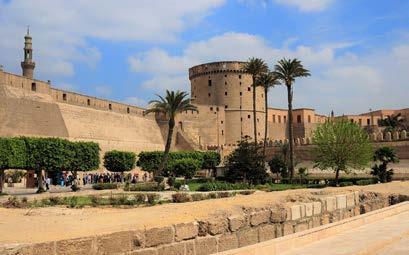
In contrast, Cairo, Egypt, is grappling with extreme heat and its cascading social and economic impacts. During the record-breaking 2022 heatwave, temperatures in Cairo soared to over 45°C, leading to a spike in heat-related illnesses and energy demand for cooling. To address these risks, local governments and community organisations have championed urban cooling measures that blend green and grey solutions. Initiatives include expanding urban green spaces to mitigate the urban heat island effect, retrofitting public buildings with reflective roofing to lower indoor temperatures and implementing “cool corridors” in dense informal neighbourhoods (World Resources Institute, 202298; UN-Habitat, 2023)99 Such strategies not only offer immediate relief from heat stress but also enhance long-term social equity and resilience in rapidly growing urban areas.

Both Jakarta and Cairo underscore a crucial lesson – that: adaptation is most effective when it combines technical innovation with local knowledge and participatory planning. Community involvement, from riverbank settlements in Jakarta to youth-led greening projects in Cairo, has proven essential in tailoring solutions to local priorities and ensuring sustainability (IPCC, 2022)100. These examples highlight the urgent need for cities to move beyond reactive measures and towards holistic adaptation approaches that are inclusive, climate-smart and grounded in local realities.
/Call to action


/Call to action
Tomorrows investable, social and climate resilience projects
Creating climate-resilient, socially inclusive infrastructure requires more than isolated projects, it demands a well-developed pipeline of investment-ready initiatives that align with national priorities and global climate commitments. For emerging economies, this is both a crucial opportunity and a formidable challenge bridging gaps in financing and delivery while ensuring that infrastructure investments meet local needs and long-term climate goals.
Central to this effort is the translation of high-level policy ambitions, including Nationally Determined Contributions (NDCs), National Adaptation Plans (NAPs) and development strategies, into practical, bankable projects. This means working across ministries, financing institutions and local communities to identify priority investments that balance technical viability, environmental sustainability and social impact.
Globally, there is a growing recognition that early-stage project preparation is critical to realising this vision. The World Bank’s Infrastructure Prioritisation Framework, for instance, has supported countries such as Kenya and Bangladesh in aligning national infrastructure plans with climate adaptation strategies, providing clearer signals to investors and ensuring that resources are directed towards projects with the greatest long-term value (World Bank, 2023)101. In Latin America, development finance institutions have pioneered approaches that integrate climate and social inclusion considerations from the outset, such as the Inter-American Development Bank’s technical assistance to project scoping and community engagement.
In practice, this shift demands robust technical tools and methodologies. Climate vulnerability assessments, scenario-based risk screening and social inclusion mapping all need to be embedded into project preparation processes. However, these tools are only as effective as the governance frameworks and institutional capacities that underpin them. Building these capacities, both within national agencies and among local project developers, is essential to ensure that pipelines reflect not only climate imperatives but also the lived realities of communities.
For infrastructure professionals, shaping investable pipelines also means rethinking the fundamentals of project design and evaluation. Nature-based solutions, for instance – increasingly recognised as critical to climate adaptation and biodiversity protection – need to be mainstreamed into project scoping, rather than treated as optional add-ons. Similarly, social inclusion metrics, such as gender equity, affordability and accessibility, must be integrated as core criteria in assessing project viability and impact.
At the financing level, MDBs and private investors are increasingly seeking transparent and climate-aligned project pipelines that offer both financial and social returns. The African Development Bank’s Programme for Infrastructure Development in Africa (PIDA), for example, has emphasised the need for harmonised regional project pipelines to strengthen cross-border trade corridors and attract climate adaptation finance. These efforts highlight that pipeline development is not just a technical challenge, it is a strategic priority for building climate-resilient and inclusive economies.
For governments, MDBs, and the private sector, the message is clear investing in pipeline development today is an investment in the future resilience and equity of infrastructure systems. It requires not only technical rigour and financing innovation, but also an unwavering commitment to governance, transparency and community engagement. Ultimately, shaping investable, climate-aligned pipelines is how infrastructure can become a lever for inclusive growth and a safeguard against the challenges of a rapidly changing world.
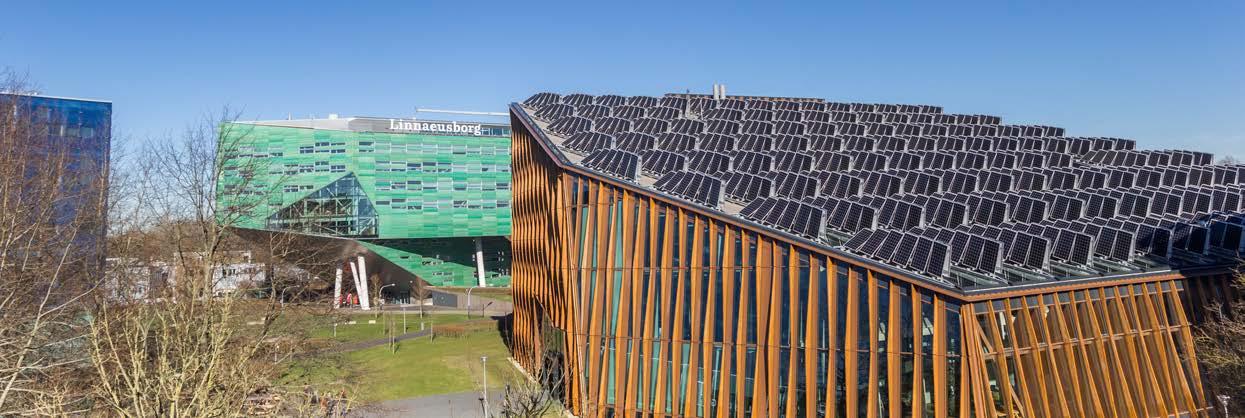
Recommendations for action
The insights in this report highlight an urgent imperative for governments, financiers, and industry leaders to embed equity, climate resilience and inclusivity at the heart of infrastructure delivery. Drawing on lessons and examples from emerging economies, the following recommendations aim to move beyond rhetoric to actionable pathways that can unlock sustainable, transformative infrastructure.
Robust resilience metrics and performance standards are essential for ensuring that infrastructure projects deliver measurable social and environmental benefits. Governments, investors and engineers should integrate these standards into planning and procurement processes, making climate adaptation and social inclusion fundamental design criteria rather than optional considerations. Additionally, multilateral development banks and private financiers should prioritize funding for projects that adhere to these benchmarks, incentivising high-impact, future-ready infrastructure solutions.
For governments and regulators, prioritising inclusive governance and integrated planning is essential. This means developing enabling policy environments that mainstream climate adaptation and social inclusion – not as afterthoughts, but as core design and funding criteria. It requires investing in human capital and technical capacity at all levels, including targeted support for local governments and municipalities, which often face the greatest pressures but have the closest understanding of community needs. Cross-border and regional collaboration should also be strengthened to address shared challenges in climate resilience and infrastructure gaps, as regional frameworks and trade corridors increasingly shape infrastructure priorities.
For financiers, there is a critical need to reframe infrastructure financing as a tool for long-term, equitable development. This includes reforming risk assessment models to prioritise climate and social resilience in fragile and climate-vulnerable economies – moving beyond traditional frameworks that undervalue these dimensions. Flexible, locally informed blended finance models and guarantee schemes can help crowd in private capital while protecting public interests. Equally important is fostering a culture of transparency and accountability, ensuring that infrastructure investments translate into tangible benefits for the communities they serve.

/Call to action
For consulting engineers and contractors, the responsibility extends beyond technical delivery to embrace social and environmental stewardship. This means embedding inclusive practices in project design and implementation – from gender-sensitive procurement to community co-design and nature-positive solutions. Professional associations and training institutions, such as FIDIC’s global member associations and FIDIC Academy, have a critical role in providing the tools and capacity-building needed to equip practitioners with the skills and knowledge for this new era.
Finally, monitoring, evaluation and learning must be embedded throughout project cycles to ensure continuous improvement and evidence-based policymaking. Establishing clear resilience metrics, transparent reporting standards and participatory evaluation processes can help build trust and ensure that infrastructure systems remain adaptive and equitable as challenges evolve.
Taken together, these recommendations are more than technical guidance – they represent a call to action for a new generation of infrastructure practice that is resilient, inclusive and climate-ready. They challenge all stakeholders to rethink the role of infrastructure in society and to champion approaches that deliver not just assets, but real and lasting value for people and the planet.

/Acknowledgements


/Acknowledgements
FIDIC in the production of the State of the World series would like to thank the following groups and individuals for their contributions to this publication.
The FIDIC board
As with all document and research produced by FIDIC the board play a vital role in ensuring that quality, integrity, and direction of such publications, as such the report thanks the board members for their contribution to this publication.
The FIDIC secretariat
FIDIC is only possible because of the hard work of its staff team and this report would like to recognise the efforts of the individuals within the FIDIC secretariat to make this report possible. The FIDIC board will continue to support and endorse the actions of the secretariat to deliver for its members and the wider infrastructure sector.
Author
• Basma Eissa, Head of Policy, ESG & Sustainability, FIDIC.
Reviewers
FIDIC’s research is important and covers a global stage. As such, FIDIC research is peer reviewed by several independent individuals and a selected board member to help ensure its quality. FIDIC would therefore like to take this opportunity to thank the following:
• Graham Pontin, Director Policy, External Affairs & Communications, FIDIC.
• Robert Spencer, Global Lead Strategic Sustainability Advice, Aecom.
• Tercia Jansen van Vuuren, Research Associate; University of Cambridge.
• Saul Jones, Research Associate; University of Cambridge.
• Tracey Ryan, Managing Director, Aurecon.
• Malani Padayachee-Saman, CEO, MPAMOT.
• Martina Hess, Director of Consulting Engineers Salzgitter GmbH
Contributors
FIDICs reports do not only focus on FIDIC’s objectives, but by their nature are a culmination of industries’ expertise and professionalism and as such there are always contributors to FIDIC’s reports. In this one we wish to recognise the following:
• Andy Walker, Communications Advisor and Contributing Editor (Infrastructure Global), FIDIC.
• Tracey Ryan, Managing Director, Aurecon.
We would also like to thank all the FIDIC member associations that generously contributed to this report.

/Acknowledgements
Thanking our member association partners
FIDIC would like to thank its global member associations, without which FIDIC would not exist. Their support in all that FIDIC does is very much appreciated, including where we have engaged with member associations during the compilation of this report.

About FIDIC /
FIDIC, the International Federation of Consulting Engineers, is the global representative body for national associations of consulting engineers and represents over one million engineering professionals and 40,000 firms in around 100 countries worldwide.
Founded in 1913, FIDIC is charged with promoting and implementing the consulting engineering industry’s strategic goals on behalf of its member associations and to disseminate information and resources of interest to its members.
FIDIC, in the furtherance of its goals, publishes international standard forms of contracts for works and for clients, consultants, sub-consultants, joint ventures and representatives, together with related materials such as standard pre-qualification forms.
FIDIC also publishes business practice documents such as policy statements, position papers, guidelines, training manuals and training resource kits in the areas of management systems (quality management, risk management, business integrity management, environment management, sustainability) and business processes (consultant selection, quality-based selection, tendering, procurement, insurance, liability, technology transfer, capacity building).
FIDIC organises the annual FIDIC Global Infrastructure Conference and an extensive programme of seminars, capacity building workshops and training courses.
FIDIC priorities
Lead the consulting and engineering industry visibly and effectively:
• Being the industry’s credible global voice
• Providing the nexus for all stakeholders
• Facilitating improvement and growth in business
• Addressing global challenges
All of the above is for the benefit of society, FIDIC members and their member firms.

Recent FIDIC policy documents /

State of the World Series - Nurturing Tomorrow’s Infrastructure Workforce; Capacity Building & Upskilling
Engineers are no longer tasked with building bridges, roads and power grids; they are tasked with building a future - one that is greener, more efficient and more equitable. The role of the infrastructure sector is evolving and with it the skills required to thrive in this new landscape. This report identifies the critical skills gaps that must be addressed and provides a clear, actionable roadmap for closing those gaps.
Click here to download

State of the World Series - Transportation and the Decarbonisation Challenge
This comprehensive report on Tomorrow’s Transportation and the Decarbonisation Challenge comes at a pivotal time where we can no longer just discuss the easy options to improve sustainability but have to tackle the difficult challenges. As stewards of innovation, FIDIC, the International Federation of Consulting Engineers, takes pride in shedding light on the pressing need to transform transportation systems to meet global sustainability goals. This report explores the critical role of the aviation, shipping and marine sectors in the fight against climate change, emphasising the importance of engineering innovations and policy interventions in driving sustainability.
Click here to download

State of the World Series - Corruption, its effects and the need to take action
We are pleased to present the first update to the recently relaunched State of the World series. In 2022 we produced the first State of the World anti-corruption report and it reminded us that corruption is still a real and significant issue.As evidenced by international public law and the domestic laws made according to the public policy of nation states, corruption is not and should not be acceptable. This State of the World report update uses the latest information to update our 2022 analysis and outlines figures on its effects, considers the relationships between economic, industry and Foreign Direct Investment (FDI) flows and the perceptions of corruption.
Click here to download
Recent FIDIC policy documents /

State of the World Series - Developing tomorrow’s sustainable energy systems
In 2023, FIDIC celebrates its 110-year anniversary and this milestone is one to celebrate but it is also a reminder that, whilst history is important, we also need to continue to look forward.In this report, FIDIC, the International Federation of Consulting Engineers, underscores its pivotal position in the realm of sustainable infrastructure and engineering solutions. FIDIC takes a staunch stance on the role of infrastructure in advancing global sustainability, emphasising the importance of aligning projects with the UN sustainable development goals (SDGs). The organisation advocates for an approach that engages engineers in the earliest stages of project conception, with a heightened focus on societal and community impact.
Click here to download

State of the World Series - Digital Technology on a Path to Net Zero
In 2022 FIDIC produced its Digital disruption and the evolution of the infrastructure sector State of the World report. This report outlined not only the pace of change but also the role of technology as a potential disrupter to industries changing their business model as a result of shifts in technology, data and/or how a combination of how customers/clients and the sector can access and use such information. It is, however, not only important to recognise that change is constant, but also that if we are going to meet challenges such as net zero, it is inevitable. In this latest State of the World report, we explore the practical role technology currently has in the development of infrastructure and also how this will change as we move forward with increased retrofitting, carbon reduction and increasing cooperation.
Click here to download
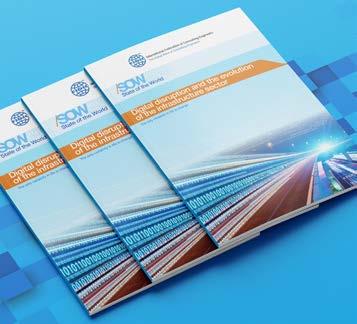
State of the World Series - Digital disruption and the evolution of the infrastructure sector
This report explores the pace of this technological change and shows that not only is the pace of change significant, but that many of the technology companies we use today for day-to-day activities in the grand scheme of time are actually very young and company longevity is continuing to decline. This suggests that not only is the pace of change faster, but the companies and people we deal with today may not be the ones we are dealing with in ten years’ time. We also discuss the role of technology as a potential disrupter to industries changing their business model as a result of shifts in technology, data and/or how a combination of how customers/ clients and the sector can access and use such information. It is then also important to look at the role of technology as an innovator and as something which drives real changes and improvements. What does it mean in terms of big data, artificial intelligence, customer lead data and more devolvement of smart devices?
Click here to download
International Federation of Consulting Engineers (FIDIC)
World Trade Center II, Geneva Airport P.O. Box 311 CH-1215 Geneva 15 - Switzerland
Tel. +41 22 568 0500
Email: fidic@fidic.org
Website: www.fidic.org
Disclaimer
This document was produced by FIDIC and is provided for informative purposes only. The contents of this document are general in nature and therefore should not be applied to the specific circumstances of individuals. Whilst we undertake every effort to ensure that the information within this document is complete and up to date, it should not be relied upon as the basis for investment, commercial, professional, or legal decisions.
FIDIC accepts no liability in respect to any direct, implied, statutory and/or consequential loss arising from the use of this document or its contents. No part of this report may be copied either in whole or in part without the express permission of FIDIC in writing.
Endnotes
(These links were accessible in June 2025 and FIDIC does not accept liability for any of its contents)
[1] World Bank. (2023). Infrastructure for Development: Unlocking Access to Opportunity. World Bank Group. https://www.worldbank.org/en/topic/infrastructure
[2] World Bank. (2023). Infrastructure for Development: Unlocking Access to Opportunity. World Bank Group. https://www.worldbank.org/en/topic/infrastructure
[3] United Nations. (2018). World Urbanization Prospects: The 2018 Revision. Department of Economic and Social Affairs, Population Division. https://population.un.org/wup/assets/WUP2018-Highlights.pdf
[4] UN-Habitat. (2022). World Cities Report 2022: Envisaging the Future of Cities. United Nations Human Settlements Programme. https://unhabitat.org/world-cities-report-2022-envisaging-the-future-of-cities
[5] World Bank. (2023). Infrastructure for Development: Unlocking Access to Opportunity. World Bank Group. https://www.worldbank.org/en/topic/infrastructure/overview
[6] IPCC. (2022). Climate Change 2022: Impacts, Adaptation, and Vulnerability. Contribution of Working Group II to the Sixth Assessment Report of the Intergovernmental Panel on Climate Change. https://www.ipcc.ch/report/ar6/wg2/chapter/chapter-1/
[7] African Development Bank. (2022). African Economic Outlook 2022: Supporting Climate Resilience and a Just Energy Transition in Africa. African Development Bank Group. https://www.afdb.org/en/documents/african-economic-outlook-2022
[8] United Nations. (2015). Transforming our World: The 2030 Agenda for Sustainable Development. United Nations General Assembly. https://docs.un.org/en/A/RES/70/1
[9] International Energy Agency. (2022). Africa Energy Outlook 2022. International Energy Agency. https://iea. blob.core.windows.net/assets/220b2862-33a6-47bd-81e9-00e586f4d384/AfricaEnergyOutlook2022.pdf
[10] World Bank. (2023). Inclusive Infrastructure for Shared Prosperity. World Bank Group. https://www.worldbank.org/en/events/2023/10/17/promoting-the-linkages-between-infrastructure-investments-and-human-capital-development
[11] World Bank. (2018). Promising progress: A diagnostic of water supply, sanitation, hygiene, and poverty in Bangladesh. Washington, DC: World Bank. worldbank.org
[12] UNICEF. (2023). Horn of Africa Drought Crisis. UNICEF. https://www.unicef.org/emergencies/catastrophe-looms-horn-africa
[13] FIDIC State of the World Report: Tackling the Global Water Crisis 2021 SOTW_2020_design_report_5 GP.pdf
[14] Asian Development Bank. (2023). Climate Change, Disaster Risks, and the Urban Poor in Southeast Asia Asian Development Bank. https://www.adb.org/what-we-do/topics/climate-change
[15] World Meteorological Organization. (2023). State of the Global Climate 2023. WMO. https://library.wmo.int/records/item/68835-state-of-the-global-climate-2023
[16] World Bank. (2023). Building Institutional Capacity for Sustainable Infrastructure. World Bank Group. https://documents1.worldbank.org/curated/en/099433011162311647/pdf/IDU002e5d5a10eb5e047280aaf2088a5c6f0f2f4.pdf
[17] Asian Development Bank. (2023). Climate Change, Disaster Risks, and the Urban Poor in Southeast Asia. Asian Development Bank. https://www.adb.org/projects/56006-003/main
[18] Inter-American Development Bank. (2022). Strengthening Technical Capacity in Latin American Infrastructure. IDB. https://www.iadb.org/en/project/RG-T3096
[19] African Union. (2022). Programme for Infrastructure Development in Africa (PIDA): Progress Report 2022. African Union. https://au.int/en/ie/pida
[20] UN Women. (2022). Progress on the Sustainable Development Goals: Gender Snapshot 2022. UN Women. https://www.unwomen.org/sites/default/files/2022-09/Progress-on-the-sustainable-development-goals-the-gender-snapshot-2022-en_0.pdf
[21] World Bank. (2022). Inclusive Infrastructure for Shared Prosperity. World Bank Group. https://openknowledge.worldbank.org/server/api/core/bitstreams/b96b361a-a806-5567-8e8a-b14392e11fa0/content
[22] World Health Organization. (2023). World Report on Disability 2023. WHO. https://cdn.who.int/media/docs/default-source/ncds/sdr/disability/global-report-on-equalhealth-forpeople-with-disabilities-easyread-version.pdf?sfvrsn=4de578a8_4
[23] Asian Development Bank. (2023). Disability and Infrastructure in Southeast Asia: Challenges and Opportunities. Asian Development Bank. https://www.adb.org/sites/default/files/publication/779396/disability-inclusive-development-2021-2025.pdf
[24] Inter-American Development Bank. (2022). Inclusive Infrastructure in Latin America: Building for Equity IDB. https://publications.iadb.org/en/publications/english/viewer/Reforms-to-Foster-Sustainable-and-Inclusive-Infrastructure-in-Latin-America-and-the-Caribbean.pdf
[25] Water and Sanitation for the Urban Poor. (2023). Nairobi's Water Crisis: Access and Affordability in Informal Settlements. WSUP. https://wsup.com/news/in-nairobis-mukuru-settlement-clean-water-sparks-a-quiet-transformation/
[26] Asian Development Bank. (2023). Climate Change, Disaster Risks and the Urban Poor in Southeast Asia Asian Development Bank. https://www.adb.org/publications/building-resilience-urban-poor
[27] Inter-American Development Bank. (2022). Inclusive Infrastructure in Latin America: Building for Equity IDB. https://publications.iadb.org/en/publications/english/viewer/Reforms-to-Foster-Sustainable-and-Inclusive-Infrastructure-in-Latin-America-and-the-Caribbean.pdf
[28] African Development Bank. (2022). African Economic Outlook 2022: Supporting Climate Resilience and a Just Energy Transition in Africa. African Development Bank Group. https://www.afdb.org/en/documents/african-economic-outlook-2022
[29] World Bank. (2023). Building for the Future: Education Infrastructure in Emerging Economies. World Bank Group. https://www.worldbank.org/en/topic/education/overview
[30] International Finance Corporation. (2023). Modular Construction: Opportunities and Challenges in Emerging Markets. IFC. https://www.ifc.org/en/insights-reports/2023/building-green-in-emerging-markets
[31] Methodology for quantifying the benefits of offsite construction; CIRIA https://www.ciria.org/c792
[32] International Energy Agency. (2023). Africa Energy Outlook 2023. IEA. https://iea.blob.core.windows.net/ assets/220b2862-33a6-47bd-81e9-00e586f4d384/AfricaEnergyOutlook2023.pdf
[33] Power for All. (2022). Decentralised Renewables: Accelerating Universal Access. Power for All. https://www.powerforall.org/insights/impact/decentralized-renewable-energy-trends-watch-2022
[34] African Development Bank. (2023). Modular Infrastructure for Resilient Healthcare: The South African Experience. AfDB. https://www.afdb.org/sites/default/files/documents/publications/strategy_for_quality_ health_infrastructure_in_africa_2022-2030.pdf
[35] Asian Development Bank. (2023). Digital Transformation of Transport in South Asia: Opportunities and Challenges. ADB. https://www.adb.org/sites/default/files/publication/1050686/asian-development-policy-report-2025.pdf
[36] World Bank. (2022). Dakar Water Supply and Sanitation Project: Lessons in Digital Transformation. World Bank Group. https://documents1.worldbank.org/curated/en/341621631221903660/pdf/Water-in-CircularEconomy-and-Resilience-WICER-The-Case-of-Dakar-Senegal.pdf
[37] Asian Development Bank. (2023). Smart Water Solutions in Asian Cities ADB. https://www.adb.org/publications/digitalizing-h2o-future-water-asia-pacific
[38] Water and Sanitation for the Urban Poor. (2023). Digital Innovations for Inclusive Urban Sanitation. WSUP. https://wsup.com/wp-content/uploads/2025/04/WSUP-Annual-Report-2023-2024.pdf
[39] Enactus Shaheed Sukhdev College of Business Studies. (2022). Project Raahat: Community-Led Sanitation Management in Delhi. https://sscbs.du.ac.in/wp-content/uploads/2024/04/Enactus-SSCBS-Annual-Report-2021-22.pdf
[40] Water and Sanitation for the Urban Poor. (2023). Decentralised Wastewater Treatment and Climate Adaptation in Kenya: Smart Monitoring Approaches. WSUP. https://wsup.com/publications/smart-water-the-experience-of-utilities-in-adopting-digital-solutions/
[41] World Bank. (2023). Smart Infrastructure for Inclusive Urban Services in East Africa. World Bank Group. https://documents1.worldbank.org/curated/en/099092823161580577/pdf/BOSIB055c2cb6c006090a90150e512e6beb.pdf
[42] Asian Development Bank. (2023). Digital Transformation of Transport in South Asia: Opportunities and Challenges. ADB. https://www.adb.org/adpr/editions/digital-transformation
[43] International Finance Corporation. (2022). Resilient Infrastructure: Using Digital Tools to Adapt to Climate Change. IFC. https://www.ifc.org/content/dam/ifc/doc/mgrt/ifc-ar22-stepping-up-in-a-time-of-uncertainty.pdf
[44] Centre for Liveable Cities and the Urban Redevelopment Authority (URA). (2020). Virtual Singapore: A Dynamic 3D City Model and Collaborative Platform https://eservice.ura.gov.sg/maps/index.html
[45] Lagmay, A. M. F., et al. (2017). Disaster risk and impacts of the 2013 Typhoon Haiyan in the Philippines Disasters, 41(4), 737-760. https://onlinelibrary.wiley.com/doi/epdf/10.1111/jfr3.12136
[46] International Renewable Energy Agency. (2023). Empowering Smallholder Farmers: Solar Cold Storage in India. IRENA. https://www.irena.org/News/articles/2023/Feb/IRENA-DG-Visits-DRE-based-Livelihood-Projects-in-India
[47] African Development Bank. (2023). Modular Infrastructure for Resilient Healthcare: The South African Experience. AfDB. https://www.afdb.org/sites/default/files/documents/publications/strategy_for_quality_ health_infrastructure_in_africa_2022-2030.pdf
[48] Inter-American Development Bank. (2023). Digital Water Solutions in Latin America: Lessons from Rio’s Favelas. IDB. file:///C:/Users/BasmaEissa/Downloads/The-Digital-Journey-of-Water-and-Sanitation-Utilities-in-Latin-America-and-The-Caribbean-What-is-at-Stake-and-How-to-Begin%20(1).pdf
[49] World Bank. (2022). MGNREGA and Infrastructure Development in Rural India: A Participatory Approach World Bank Group. https://www.worldbank.org/en/news/feature/2019/11/25/schemes-to-systems-mahatma-gandhi-rural-employment-guarantee-scheme-india
[50] WaterAid. (2023). Community-Led Water Governance in Informal Settlements: Lessons from Kenya. WaterAid. https://washmatters.wateraid.org/sites/g/files/jkxoof256/files/Kenya%20case%20study_0.pdf
[51] Inter-American Development Bank. (2023). Participatory Budgeting and Urban Infrastructure in Latin America. IDB. https://publications.iadb.org/en/publications/english/viewer/Infrascope-20232024EI_IDB2025.pdf
[52] African Development Bank. (2022). Building Resilience in Agricultural Infrastructure: Community-Led Irrigation in West Africa. AfDB. https://mapafrica.afdb.org/en/projects/46002-P-MZ-AA0-033
[53] International Labour Organization. (2022). Public Works and Skills Training for Inclusive Infrastructure in Tanzania. ILO. file:///C:/Users/BasmaEissa/Downloads/Evaluation%20Summary%20-%20ILO-Irish%20 Aid%20PP-IGSPJ%2010-2022.pdf
[54] Asian Development Bank. (2023). Engineering Education and Inclusive Infrastructure in Southeast Asia ADB. https://www.adb.org/sites/default/files/publication/892641/tech-inclusive-education-evidence-practices-road-map.pdf
[55] Council for the Regulation of Engineering in Nigeria (COREN). (2023). Annual Report: Professional Standards and Capacity Development in Nigeria’s Engineering Sector. COREN. https://coren.gov.ng/2023/
[56] World Bank. (2023). Strengthening Engineering Education for Climate-Resilient Infrastructure in Kenya World Bank Group. https://documents1.worldbank.org/curated/en/099656108292339454/pdf/ IDU017214ec603c08043320912a064b20e8348ab.pdf
[57] Inter-American Development Bank. (2022). Urban Innovation and Nature-Based Solutions in Latin America: The Role of Research Hubs. IDB. https://publications.iadb.org/en/publications/english/viewer/Nature-based-Solutions-in-Latin-America-and-the-Caribbean-Support-from-the-Inter-American-Development-Bank.pdf
[58] Asian Development Bank. (2023). Engineering Education and Inclusive Infrastructure in Southeast Asia ADB. https://www.adb.org/sites/default/files/publication/28003/strengthening-inclusive-education.pdf
[59] World Bank. (2023). Strengthening Engineering Education for Climate-Resilient Infrastructure in Kenya World Bank Group. https://documents1.worldbank.org/curated/en/099656108292339454/pdf/ IDU017214ec603c08043320912a064b20e8348ab.pdf
[60] Inter-American Development Bank. (2022). Urban Innovation and Nature-Based Solutions in Latin America: The Role of Research Hubs. IDB. https://publications.iadb.org/en/publications/english/viewer/ Nature-based-Solutions-in-Latin-America-and-the-Caribbean-Support-from-the-Inter-American-Development-Bank.pdf
[61] Asian Development Bank. (2023). Mahila Shakti Kendra and Women’s Digital Literacy for Inclusive Infrastructure. ADB. https://www.adb.org/news/infographics/accelerating-digital-inclusion-women-girls-asia-pacific
[62] African Development Bank. (2023). Inclusive Technical Training for Persons with Disabilities in East Africa AfDB. https://mapafrica.afdb.org/en/projects/46002-P-KE-IAE-003
[63] African Development Bank. (2023). TVET for Sustainable Infrastructure: Lessons from Rwanda. AfDB. https://www.afdb.org/sites/default/files/documents/publications/crb_rwanda_en_-_web-v3.pdf
[64] World Bank. (2023). Climate-Smart Infrastructure and TVET in Kenya. World Bank Group. https://documents1.worldbank.org/curated/en/099051223003010363/pdf/P1547840b264f90f90af5b049f54817d408.pdf
[65] Asian Development Bank. (2023). Bangladesh Delta Plan 2100: Institutional Capacity for Climate Resilience. ADB. https://www.adb.org/sites/default/files/project-documents/58271/58271-001-tar-en.pdf
[66] World Bank. (2023). Climate-Smart Infrastructure and TVET in Kenya. World Bank Group. https://documents1.worldbank.org/curated/en/099051223003010363/pdf/P1547840b264f90f90af5b049f54817d408.pdf
[67] G20. (2023). G20 Independent Expert Group Report: Strengthening MDBs for Global Challenges. G20. https://www.g20.org/wp-content/uploads/2025/04/T20.pdf
[68] World Bank. (2023). Infrastructure Financing Needs in Developing Countries: Closing the Gap. World Bank Group. https://ppp.worldbank.org/sites/default/files/2022-04/Closing-the-infrastructure-gap_ World-Bank-Group_IATF-Issue-Brief.pdf
[69] African Development Bank. (2022). Infrastructure Guarantees in Emerging Markets: Unlocking Private Capital for Development. AfDB. https://www.afdb.org/en/news-and-events/press-releases/african-development-bank-group-and-private-infrastructure-development-group-team-scale-domestic-capital-mobilization-across-africa-83809
[70] African Development Bank. (2023). Inclusive PPPs in Kenya: Lessons from the Nairobi-Nakuru-Mau Summit Highway. AfDB. https://www.afdb.org/sites/default/files/documents/projects-and-operations/ kenya_-_nairobi-nakuru-mau_summit_highway_-_project_summary_note.pdf
[71] Asian Development Bank. (2023). Hybrid PPP Models for Urban Transport in India: A Study of Metro Systems. ADB. https://www.adb.org/publications/hybrid-annuity-model-ppps-india-road-sector
[72] World Bank. (2023). Decentralised Solar and Blended Finance in East Africa. World Bank Group. https://documents1.worldbank.org/curated/en/935261468765892988/pdf/multi0page.pdf
[73] City of Cape Town. (2023). Green Bond for Climate Resilience: Lessons and Impact. City of Cape Town https://resource.capetown.gov.za/documentcentre/Documents/City%20strategies,%20plans%20and%20 frameworks/Green_Bond_Reporting_Framework.pdf
[74] World Bank. (2023). Subnational Pooled Financing in Indonesia: A Pathway to Climate-Smart Cities World Bank Group. https://documents1.worldbank.org/curated/en/099011524041539169/pdf/ P1741581e4345a0501991b1b2bdeb9bfaea.pdf
[75] IDB. (2023). Innovative Financing for Sustainable Water in Latin America: A Pay-for-Results Approach Inter-American Development Bank. https://www.iadb.org/en/project/RG-T4643
[76] Nigerian Ministry of Finance. (2023). Nigeria’s Green Bond: A Milestone for Climate Finance https://finance.gov.ng/fgn-moves-to-activate-climate-change-fund-aligns-finance-with-green-agenda/
[77] World Bank. (2023). Chile’s Green Bond Programme: Mobilising Finance for Climate Action. World Bank Group. https://documents1.worldbank.org/curated/en/459991621583141166/pdf/Paving-the-Path-Lessons-from-Chile-s-Experiences-as-a-Sovereign-Issuer-for-Sustainable-Finance-Action.pdf
[78] IDB. (2023). Innovative Financing for Sustainable Water in Latin America: A Pay-for-Results Approach. Inter-American Development Bank. https://www.iadb.org/en/project/RG-T4643
[79] Asian Development Bank. (2023). Outcome-Based Financing for Low-Carbon Transport in India. ADB. https://www.adb.org/sites/default/files/project-documents/57027/57027-001-tar-en.pdf
[80] World Bank. (2023). Lima Metro Line 2: Inclusive and Sustainable Urban Transport in Peru. World Bank Group. https://openknowledge.worldbank.org/server/api/core/bitstreams/a9a397a0-5c77-58ee-8998f11af5ecf242/content
[81] International Finance Corporation. (2023). Benban Solar Park: Scaling Renewable Energy in Egypt. IFC. https://www.ifc.org/en/stories/2010/benban-solar-park-egypt
[82] Nigerian Ministry of Finance. (2023). Nigeria’s Green Bond Programme: Pioneering Climate-Linked Finance https://www.dmo.gov.ng/fgn-bonds/green-bond
[83] World Resources Institute. (2023). Integrating Climate Risks into Infrastructure Planning: A Global Review. WRI. https://www.wri.org/initiatives/adaptation-action-coalition/workstreams/infrastructure
[84] African Development Bank. (2023). Urban Adaptation in Dakar: Building Resilient Infrastructure for Coastal Cities. AfDB. https://blogs.afdb.org/climate-change-in-africa/building-climate-resilient-infrastructure-in-africa-challenges-and
[85] World Bank. (2023). Climate-Resilient Cities: Lessons from India’s Urban Adaptation Programme. World Bank Group. file:///C:/Users/BasmaEissa/Downloads/P179577-8585a245-8486-4152-9eac-8ffe8b087683.pdf
[86] World Bank. (2023). Building Climate Resilience in Infrastructure: A Guide for Developing Countries https://www.worldbank.org/en/news/feature/2020/11/17/the-adaptation-principles-6-ways-to-build-resilience-to-climate-change
[87] African Development Bank. (2023). Building Climate-Resilient Infrastructure in Africa https://blogs.afdb.org/climate-change-in-africa/building-climate-resilient-infrastructure-in-africa-challenges-and
[88] World Resources Institute. (2023). Nature-Based Solutions for Climate Adaptation: A Practitioner’s Guide https://publications.wri.org/potential-for-nature-based-solutions-initiatives/recommendations
[89] World Bank. (2023). Building Climate Resilience in Infrastructure: A Guide for Developing Countries https://documents1.worldbank.org/curated/en/762871468148506173/pdf/826480WP0v10Bu0130Box37986200OUO090.pdf
[90] African Development Bank. (2023). Building Climate-Resilient Infrastructure in Africa. https://blogs.afdb.org/climate-change-in-africa/building-climate-resilient-infrastructure-in-africa-challenges-and
[91] Inter-American Development Bank. (2023). Climate Resilience and Hybrid Infrastructure Solutions. https://publications.iadb.org/en/publications/english/viewer/Increasing-Infrastructure-Resilience-with-Nature-Based-Solutions-NbS.pdf
[92] World Bank. (2023). Building Climate Resilience in Emerging Economies: Lessons from Vietnam and the Philippines https://openknowledge.worldbank.org/server/api/core/bitstreams/0ecf03c9-e42a-4e74-888d8166414551e7/content
[93] African Development Bank. (2023). Programme for Infrastructure Development in Africa (PIDA) Progress Report. https://www.afdb.org/en/topics-and-sectors/initiatives-partnerships/programme-for-infrastructure-development-in-africa-pida
[94] Global Infrastructure Basel Foundation. (2023). SuRe® Standard for Sustainable and Resilient Infrastructure. https://sustainable-infrastructure-tools.org/tools/sure-standard/
[95] International Finance Corporation. (2022). Performance Standards on Environmental and Social Sustainability https://www.ifc.org/content/dam/ifc/doc/mgrt/ifc-performance-standards.pdf
[96] Global Center on Adaptation. (2022). Integrating Climate Adaptation into National Infrastructure Policies https://gca.org/reports/
[97] World Bank. (2023). Jakarta Flood Management and Coastal Protection. World Bank Group https://projects.worldbank.org/en/projects-operations/project-detail/P111034
[98] Asian Development Bank. (2023). Urban Climate Resilience in Indonesia: Strategies and Innovations https://www.adb.org/projects/documents/ino-58204-001-tar
[99] World Resources Institute. (2022). Building Heat-Resilient Cities in the Middle East https://www.wri.org/insights/future-extreme-heat-cities-data
[100] UN-Habitat. (2023). Urban Cooling Strategies: Case Studies from Cairo https://unhabitat.org/annual-report-2023
[101] IPCC. (2022). Climate Change 2022: Impacts, Adaptation and Vulnerability. https://www.ipcc.ch/report/ar6/wg2/
[102] World Bank. (2023). Infrastructure Prioritization Framework: Supporting climate resilience and sustainable development. https://thedocs.worldbank.org/en/doc/844631461874662700-0100022016/
